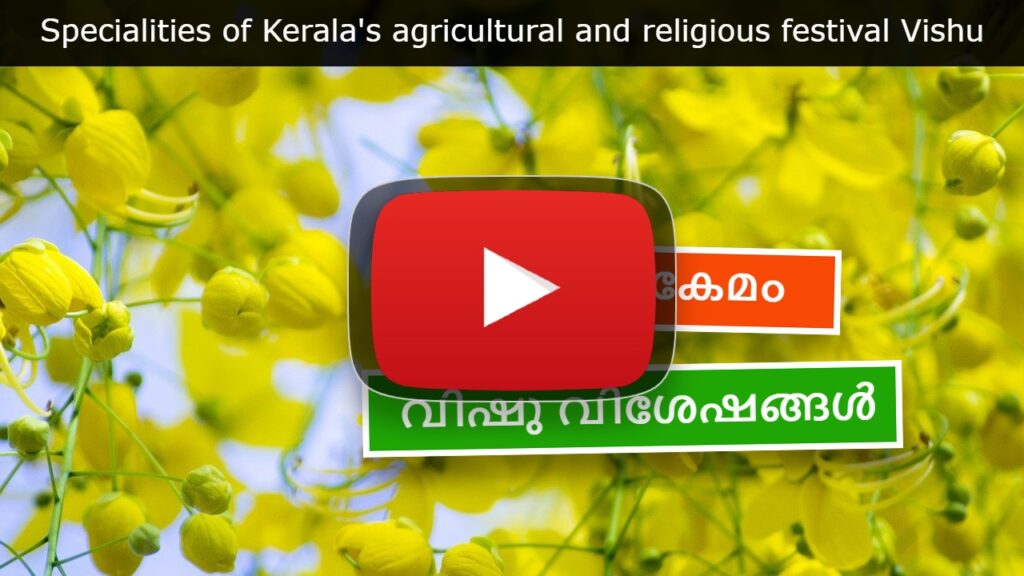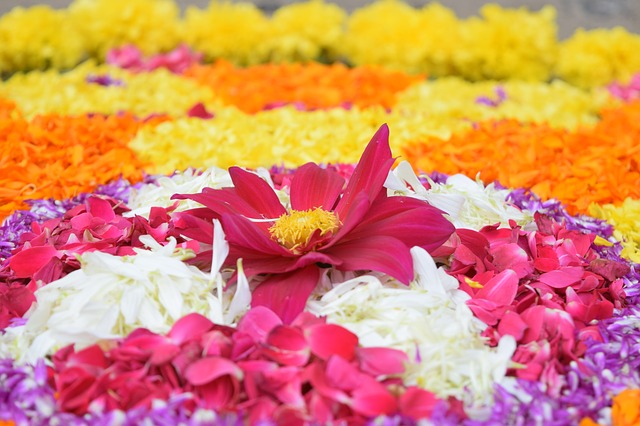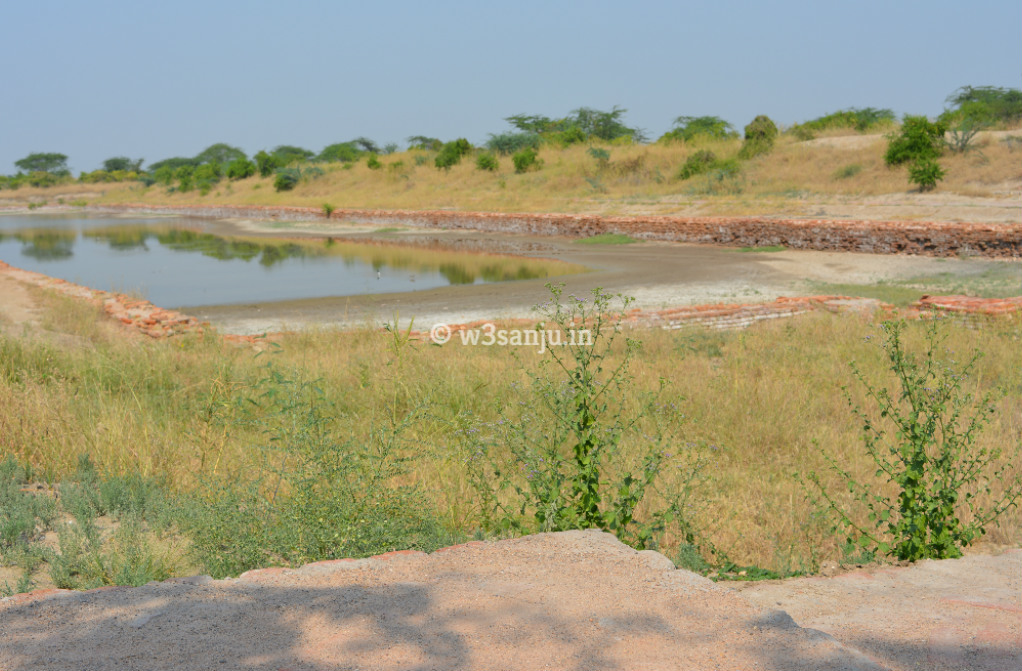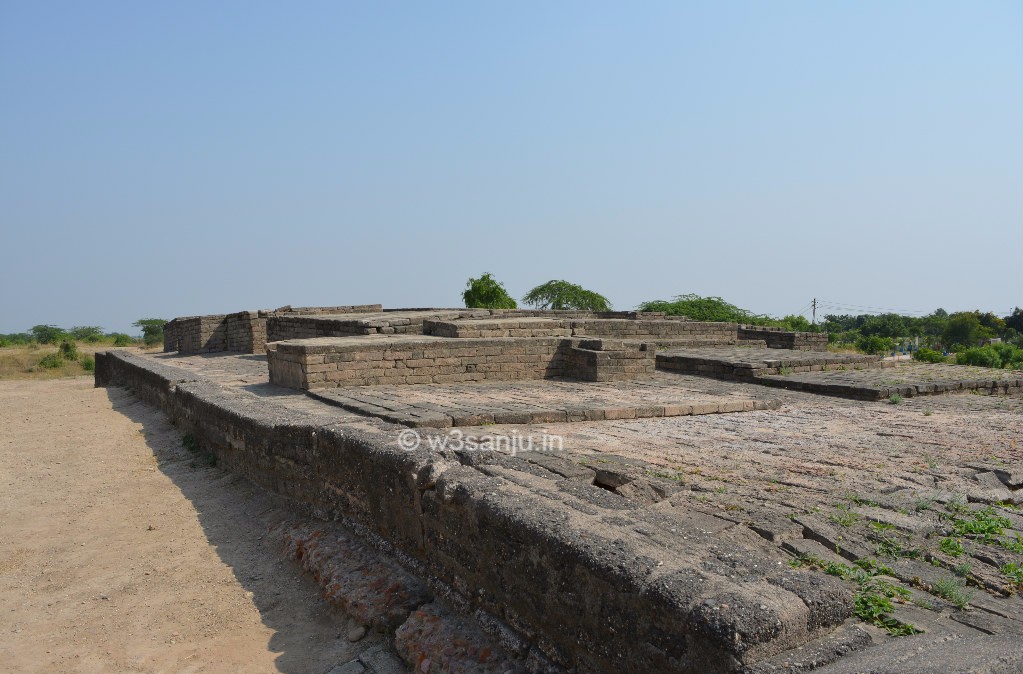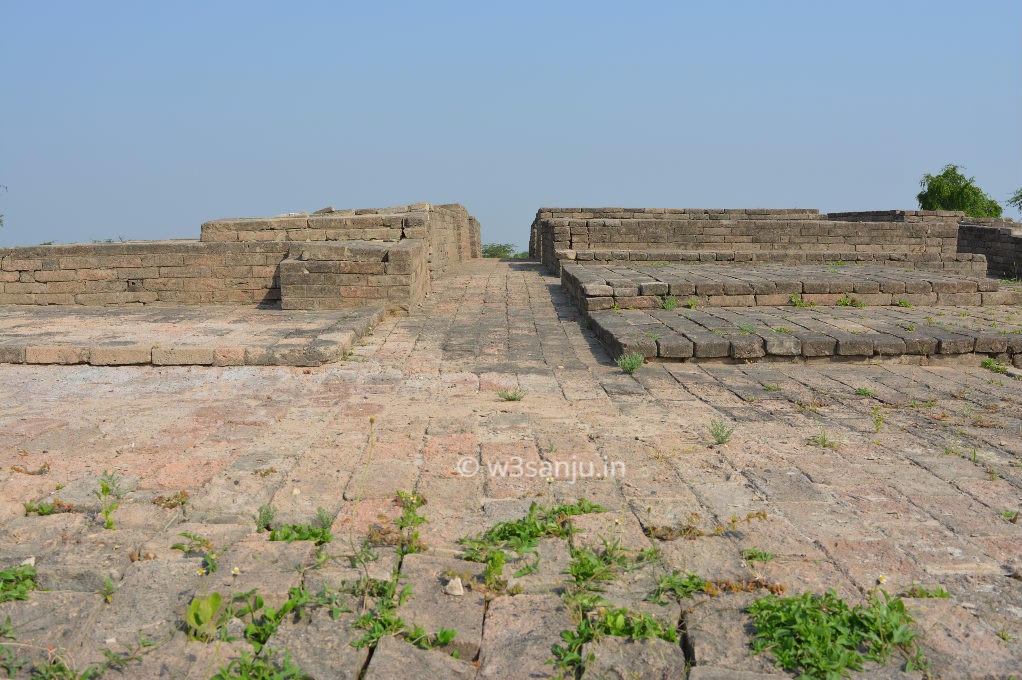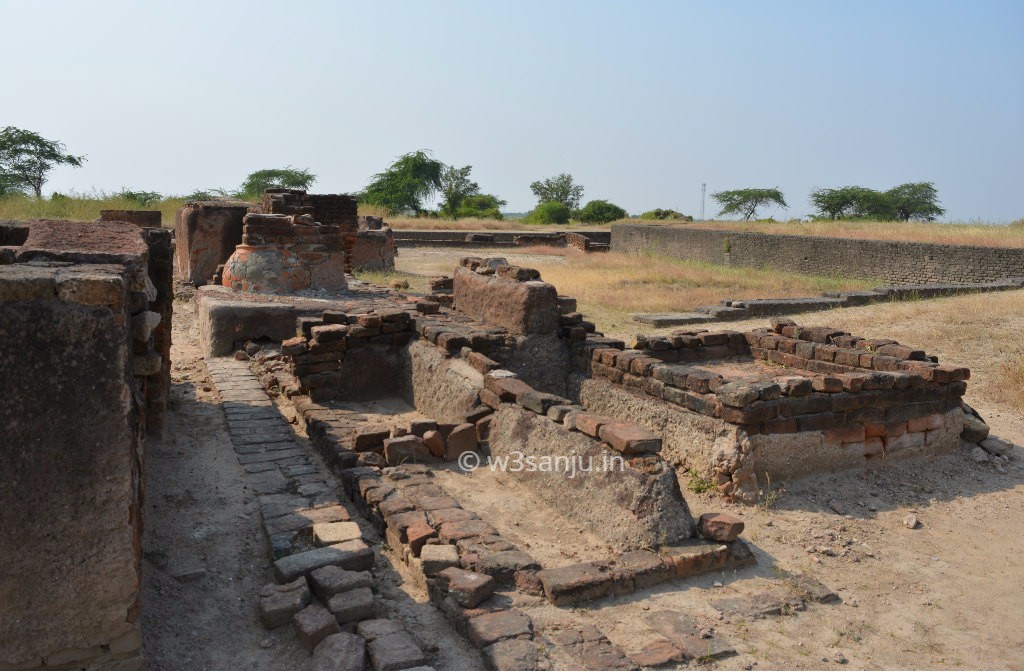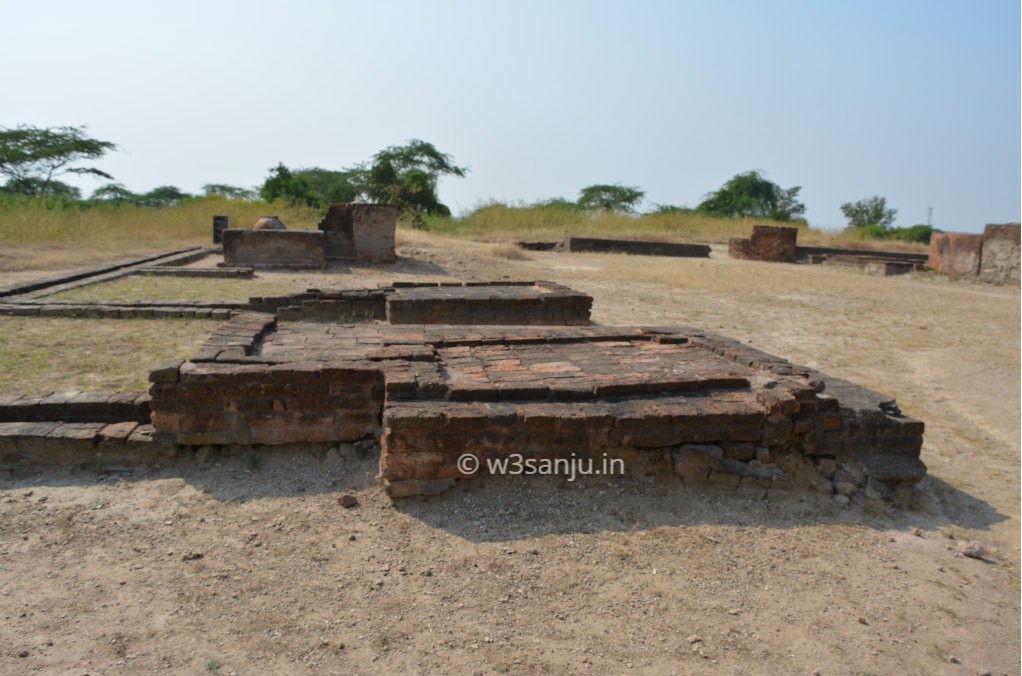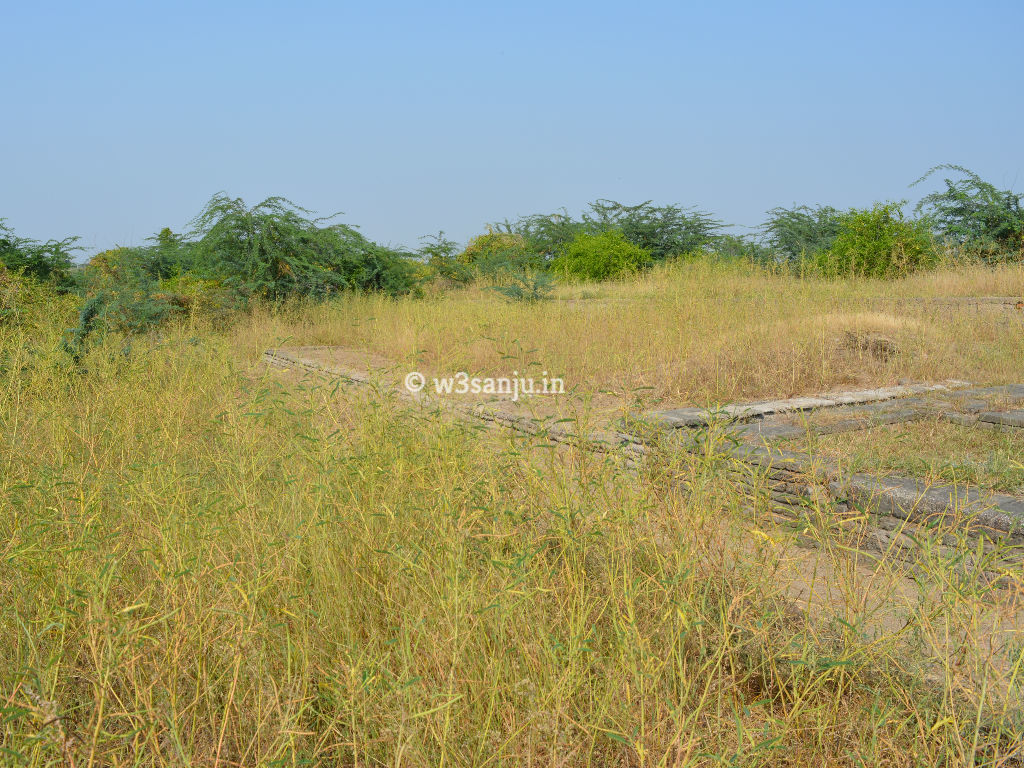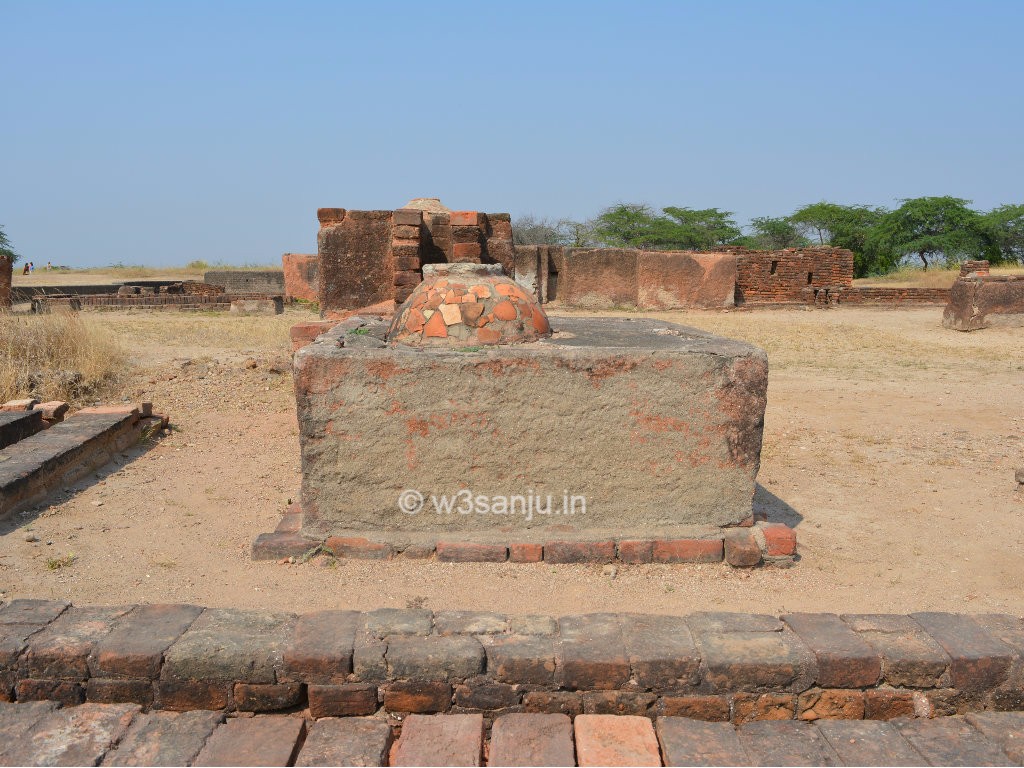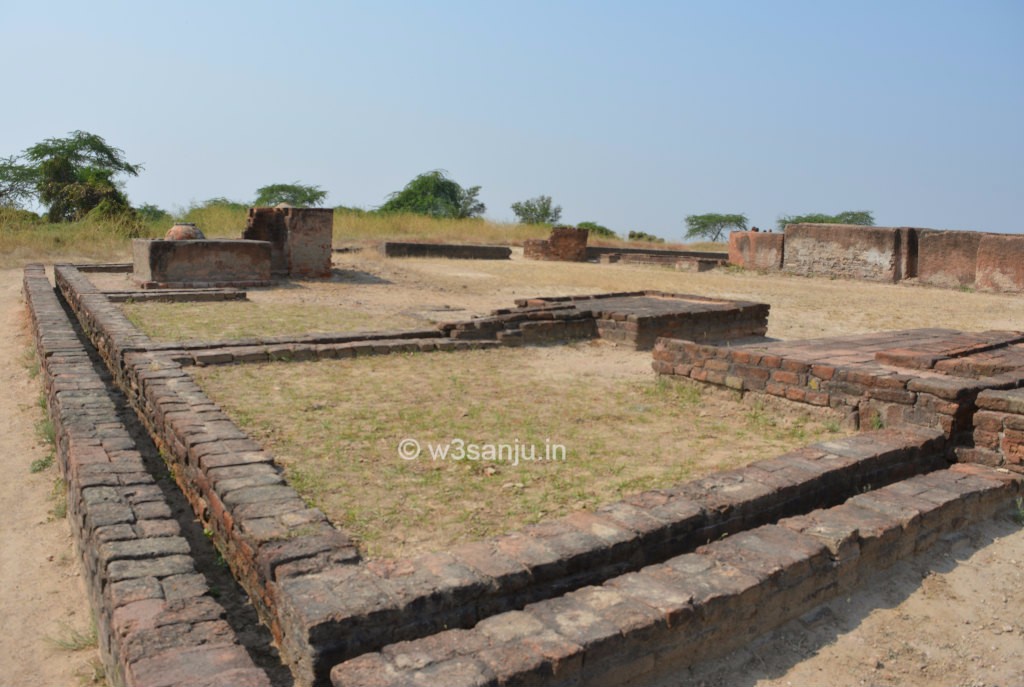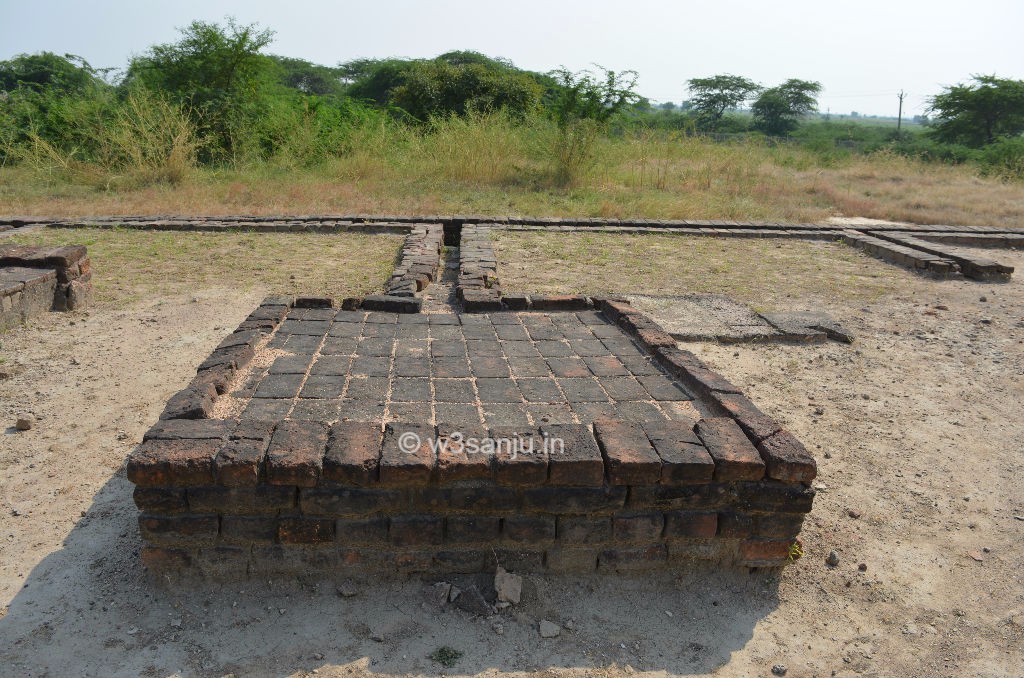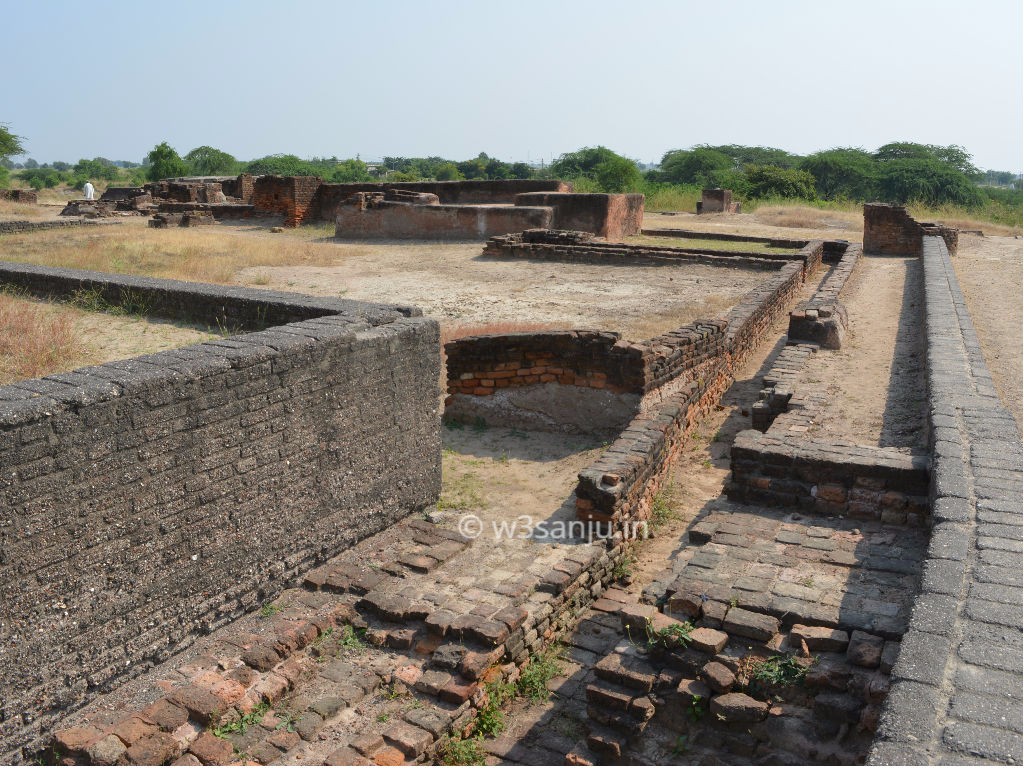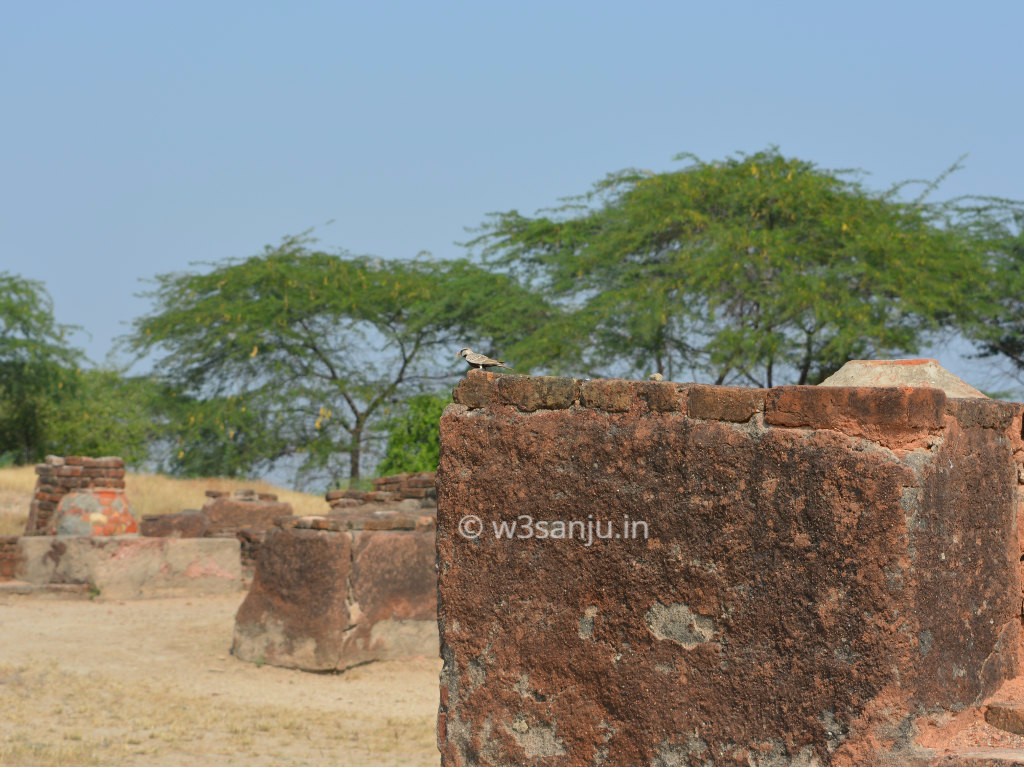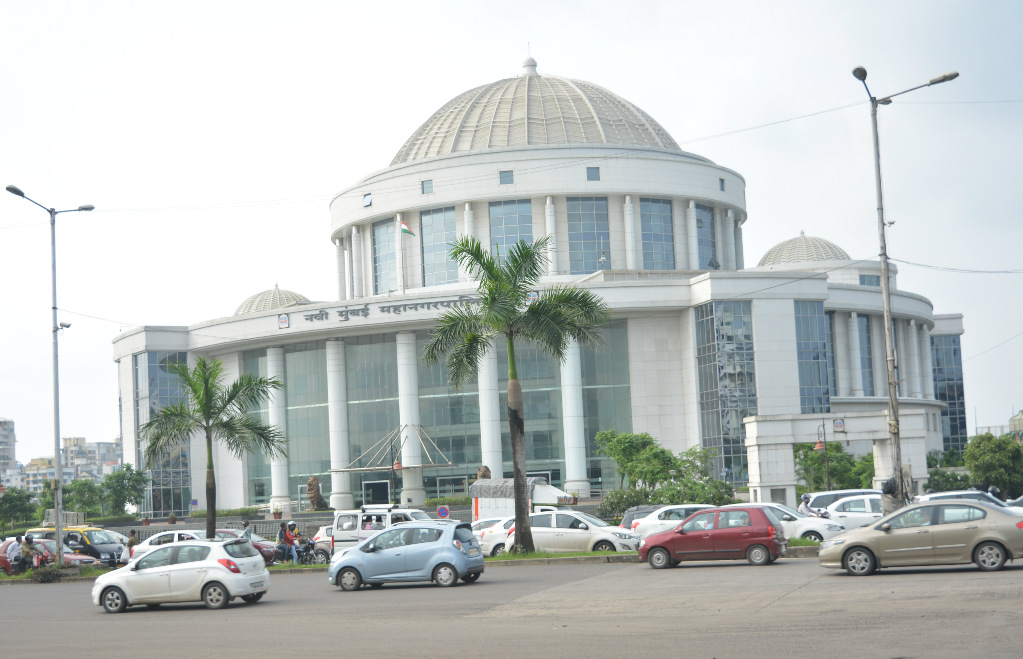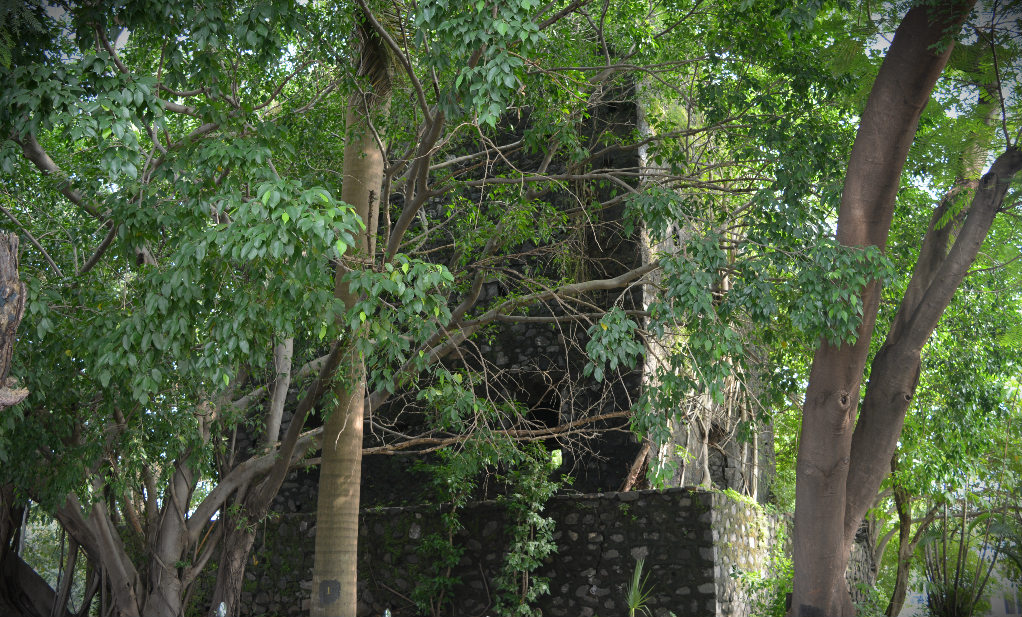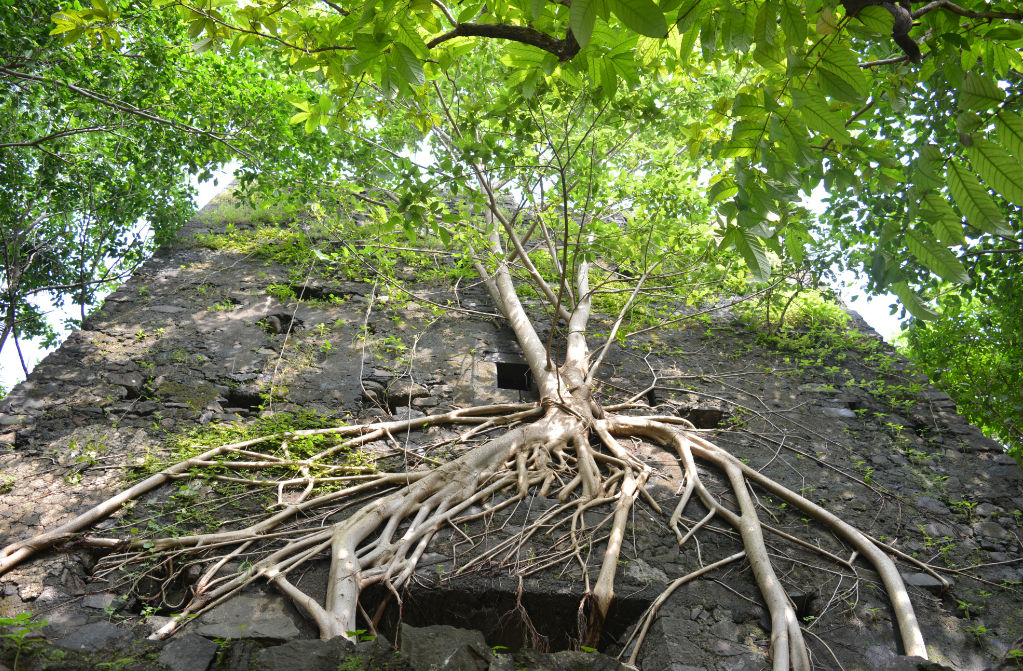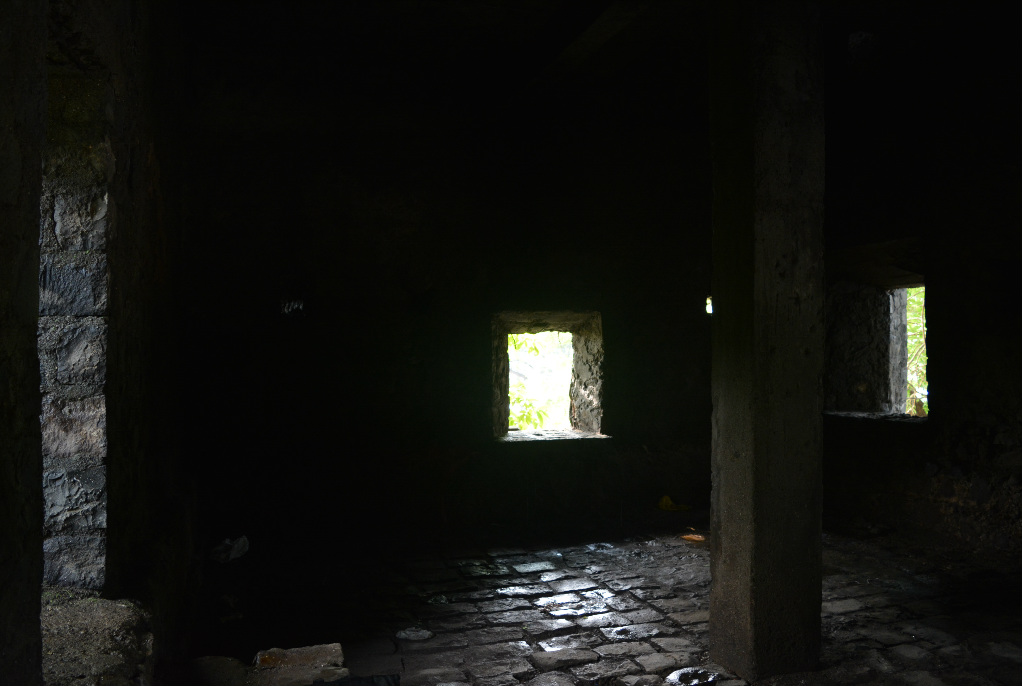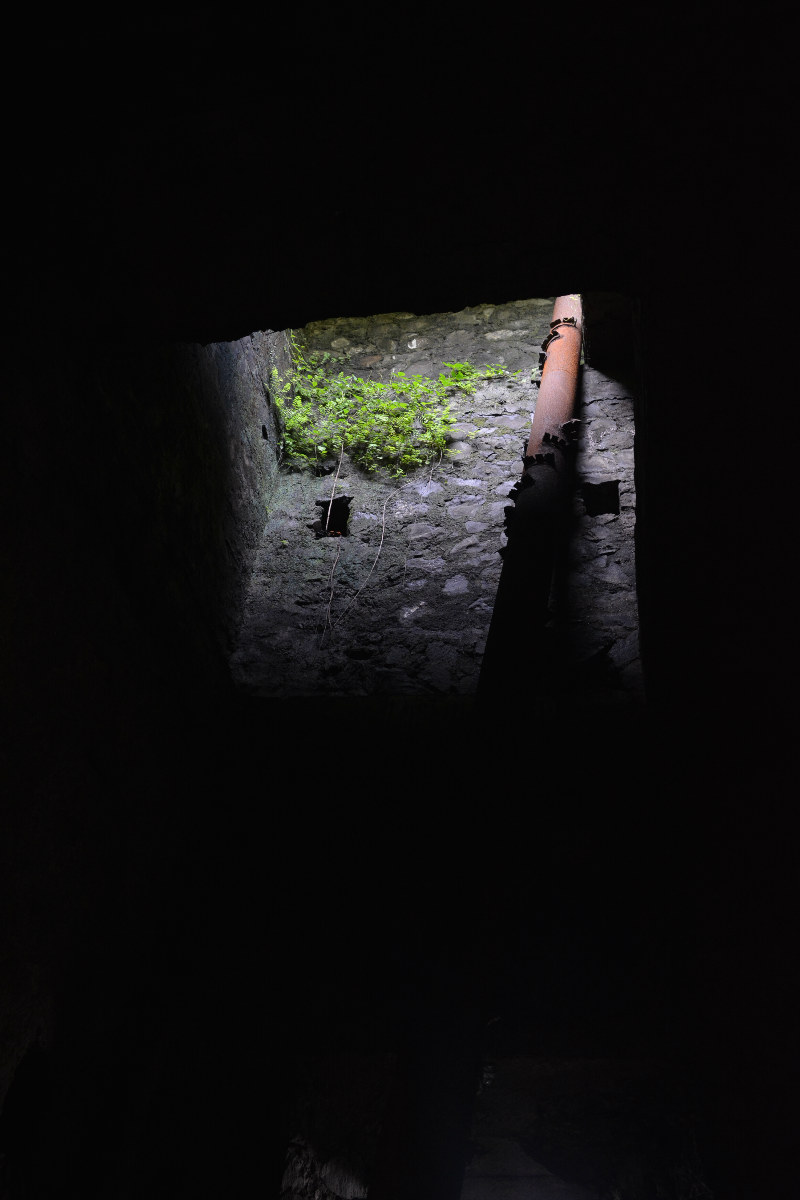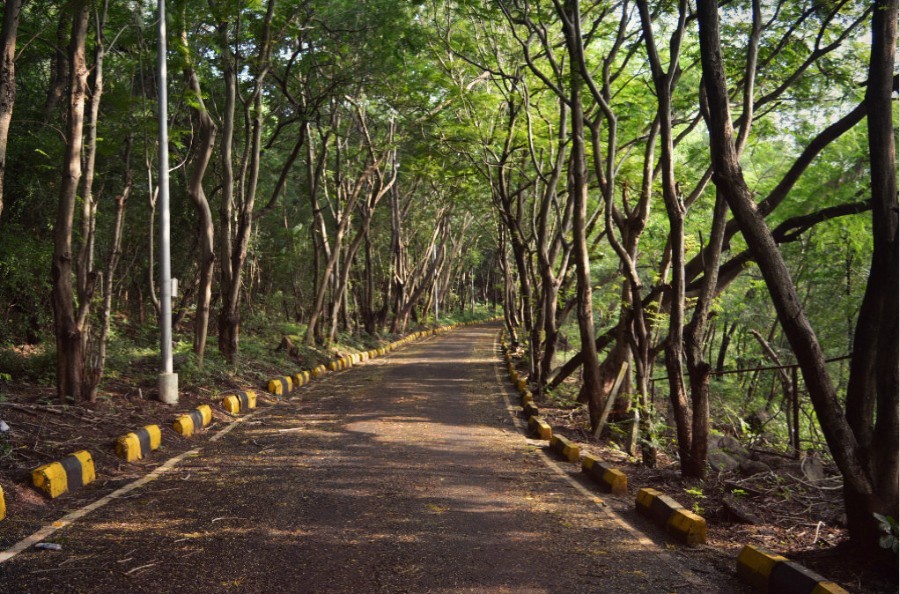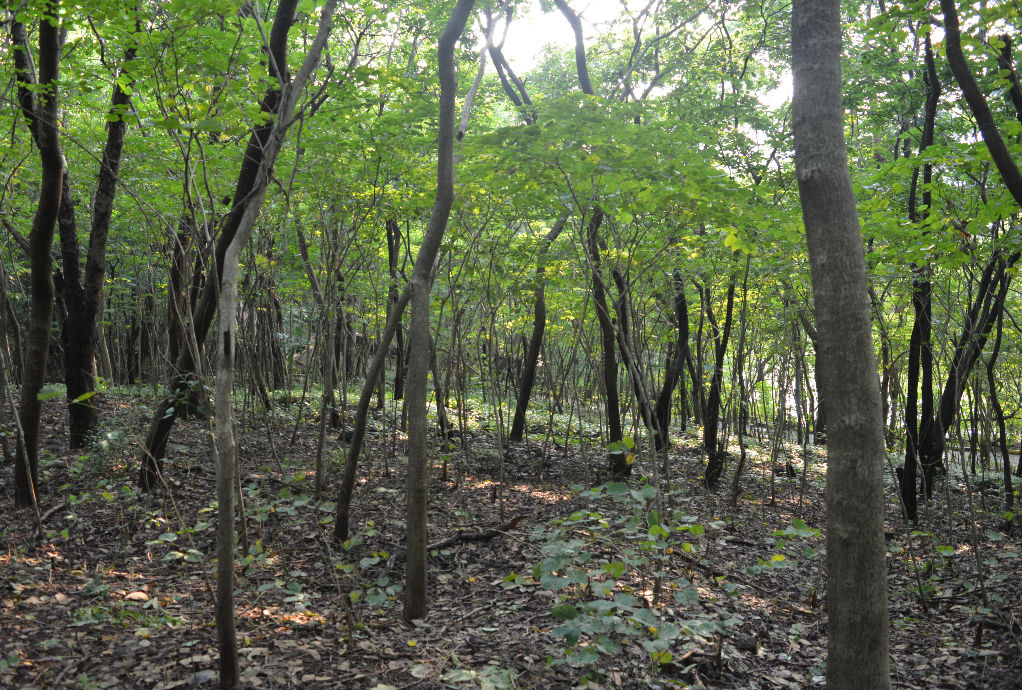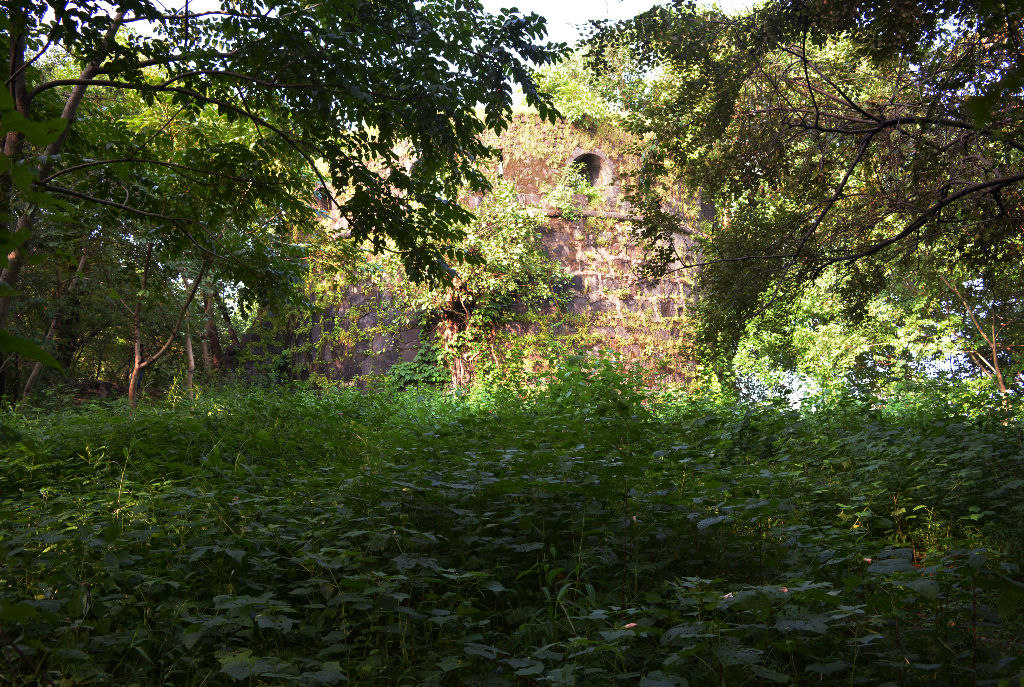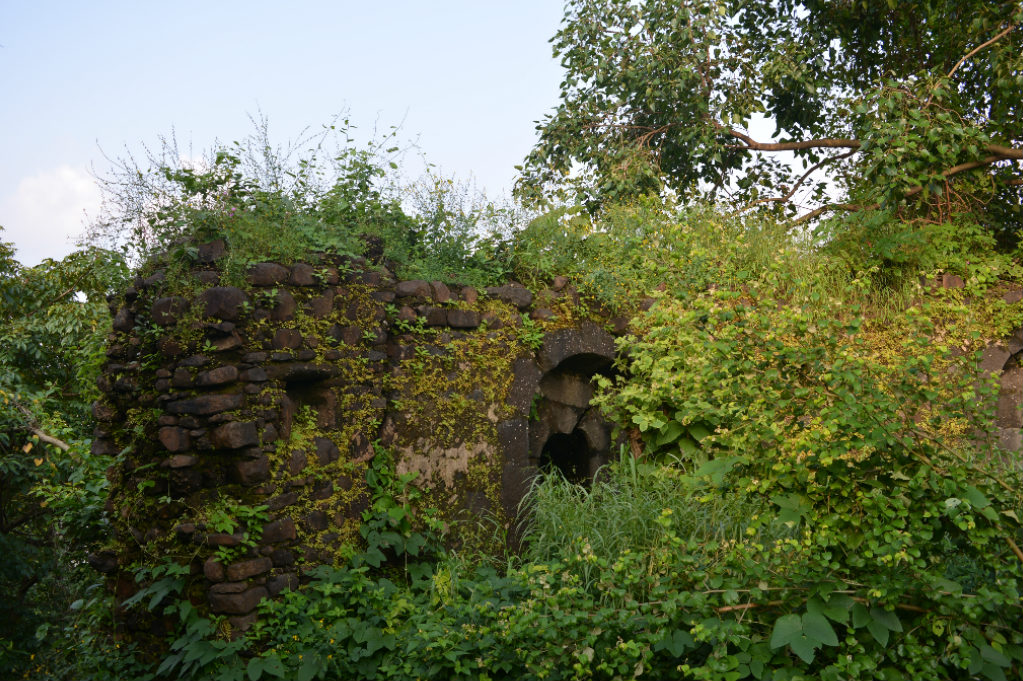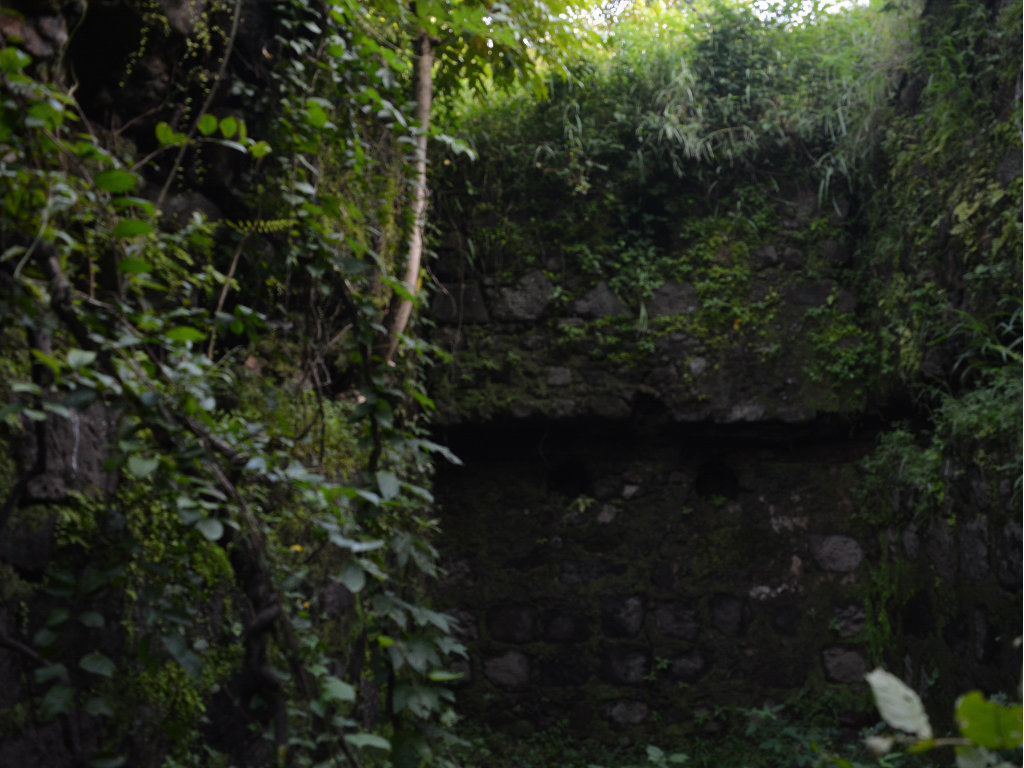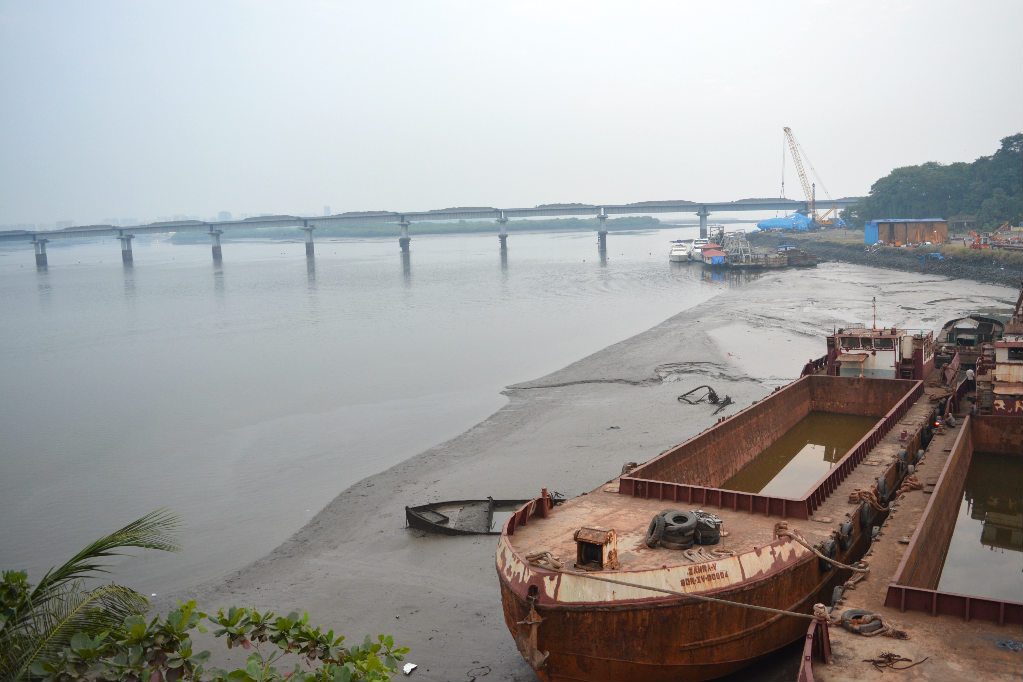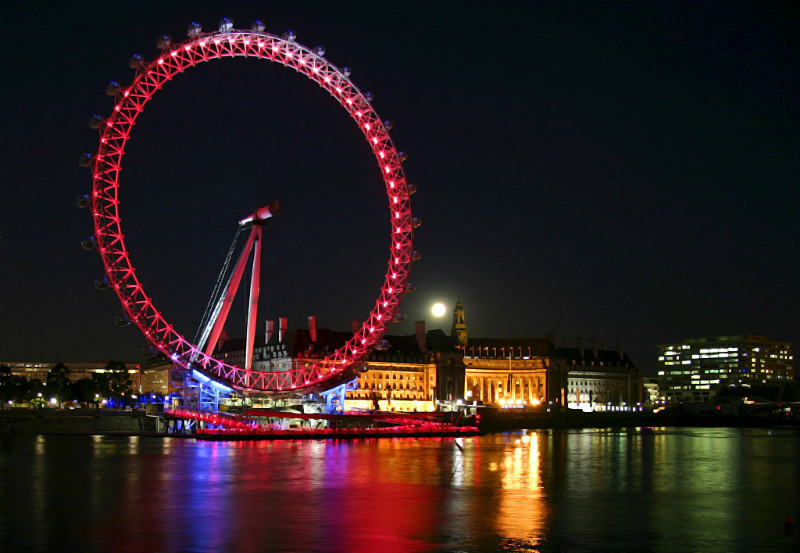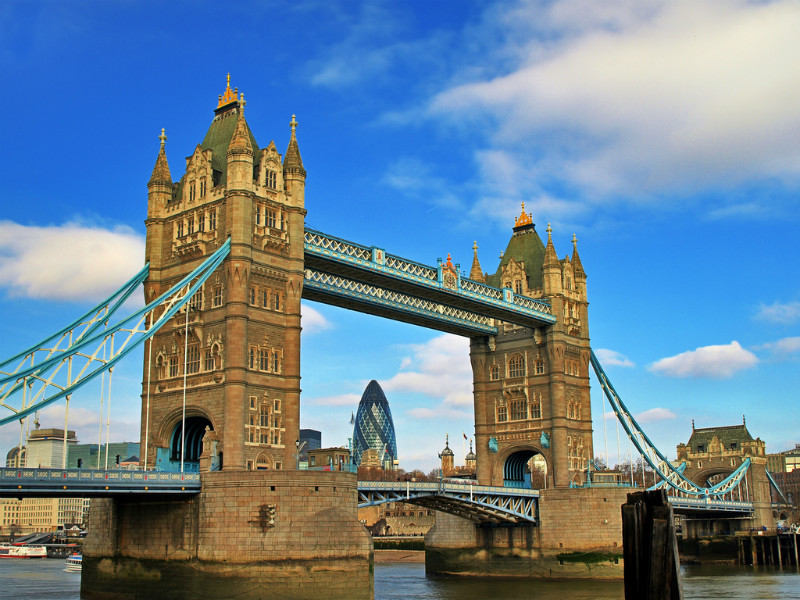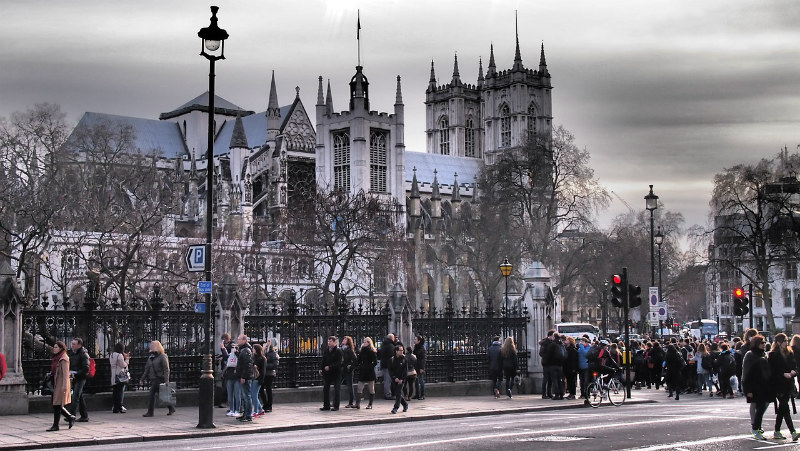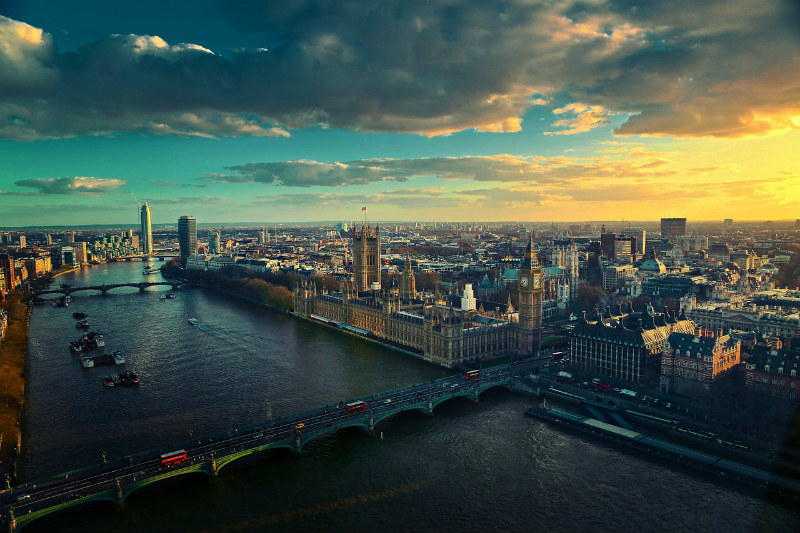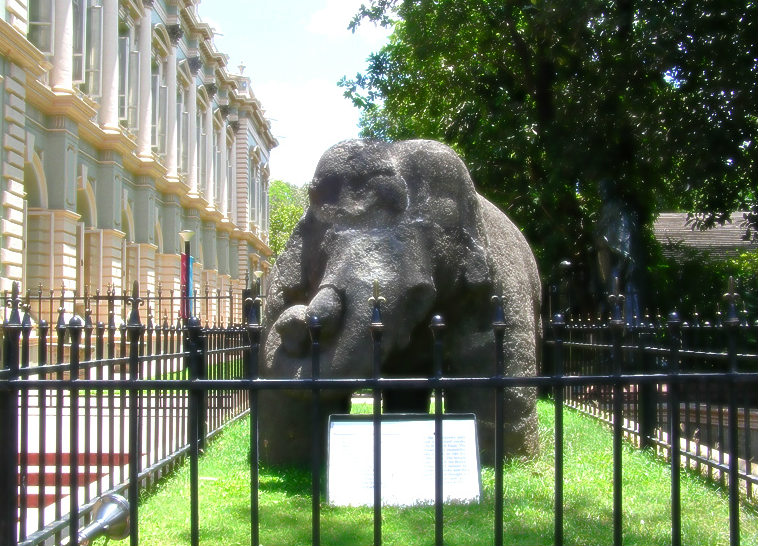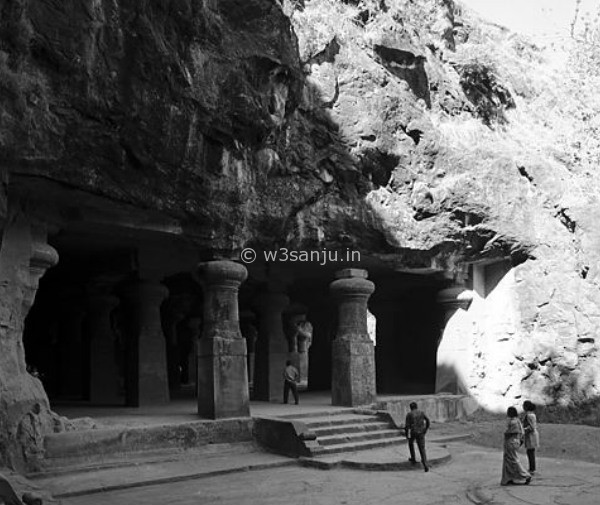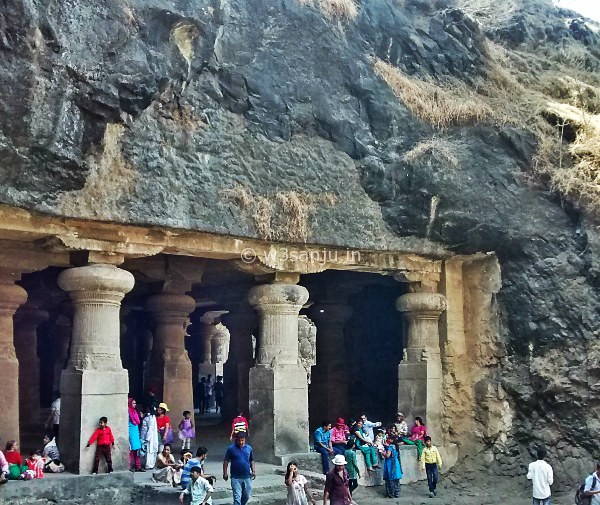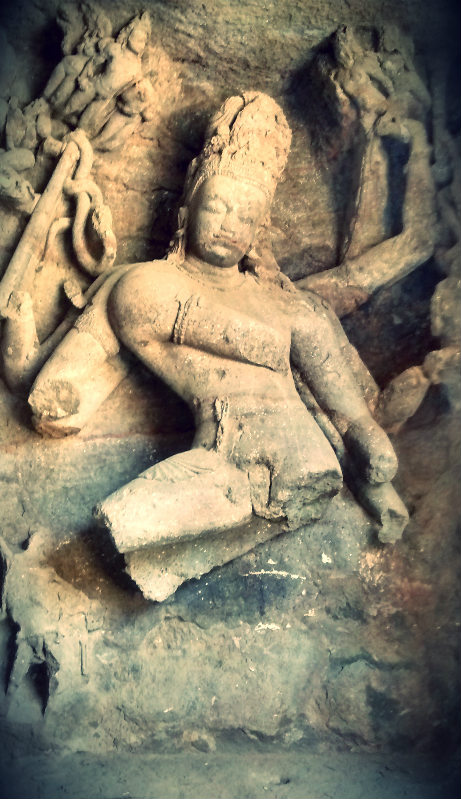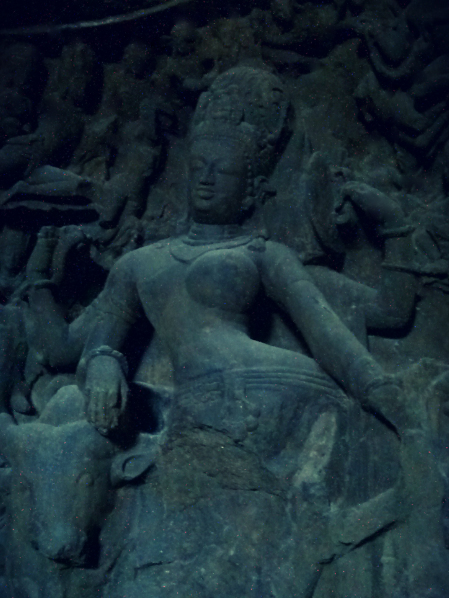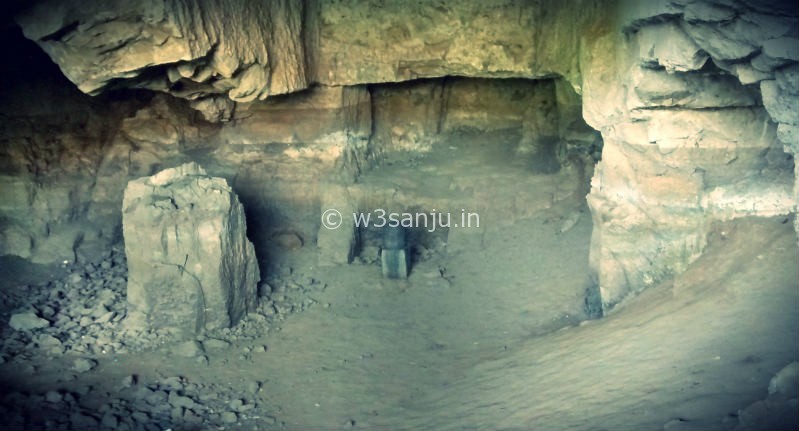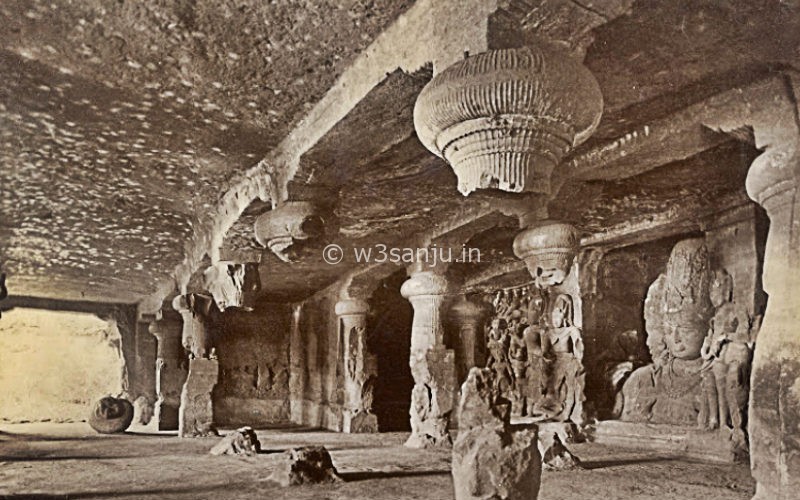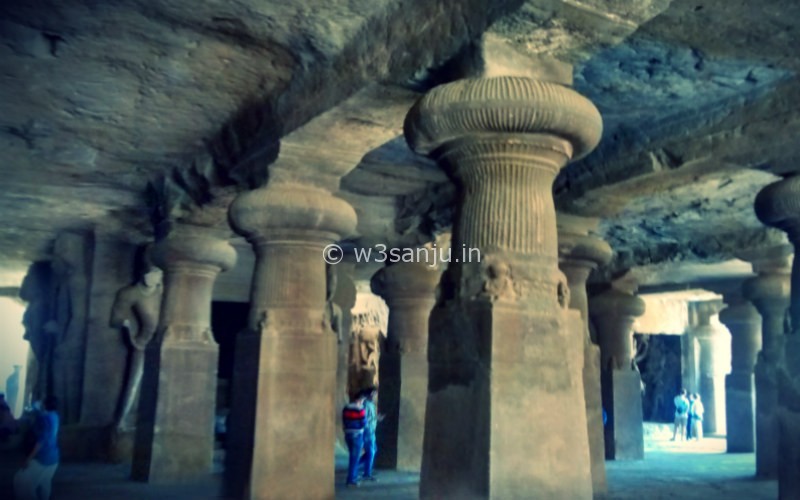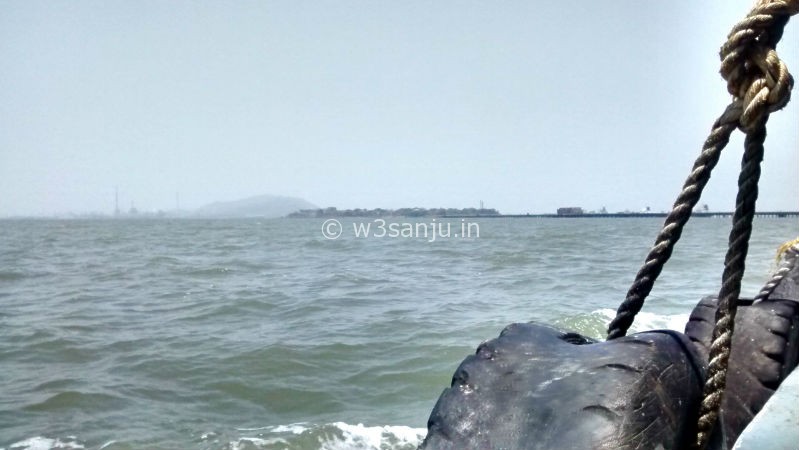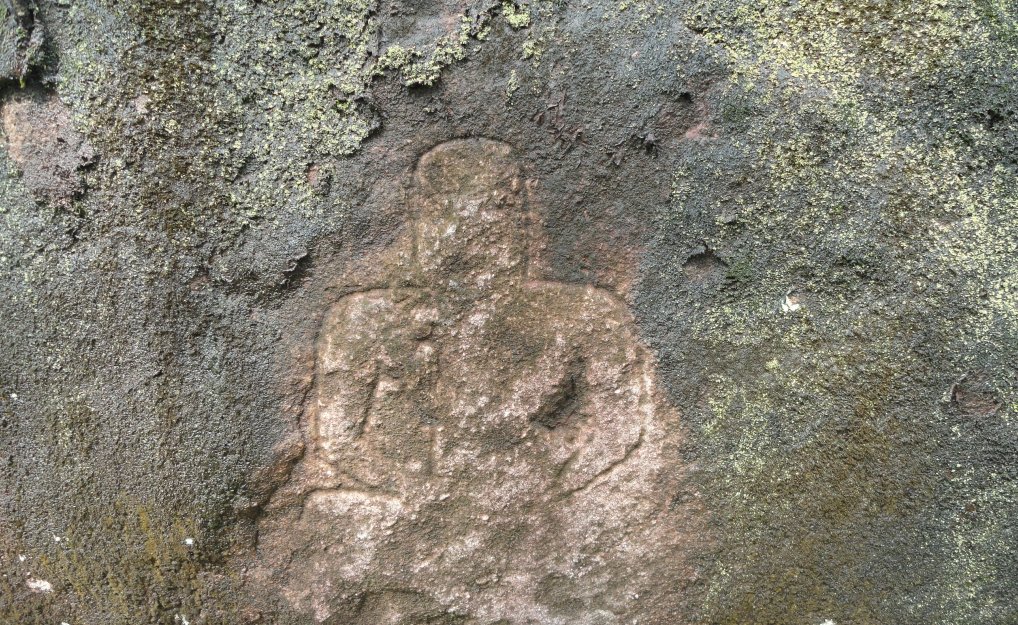Category Archives: Travel
Specialities of Kerala’s agricultural and religious festival Vishu
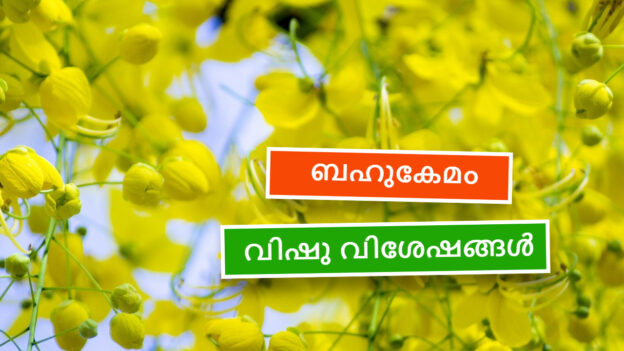
Vishu is an agricultural and religious festival in Indian state Kerala. Vishu is celebrated on Medam (Aries) 1st of the Malayalam month. Scientifically speaking, this is also the time when the Sun enters Aries. Vishu means equal. That is, a rare day with equal night and day. Vishu, which is celebrated on the day of Aries, has that special feature.
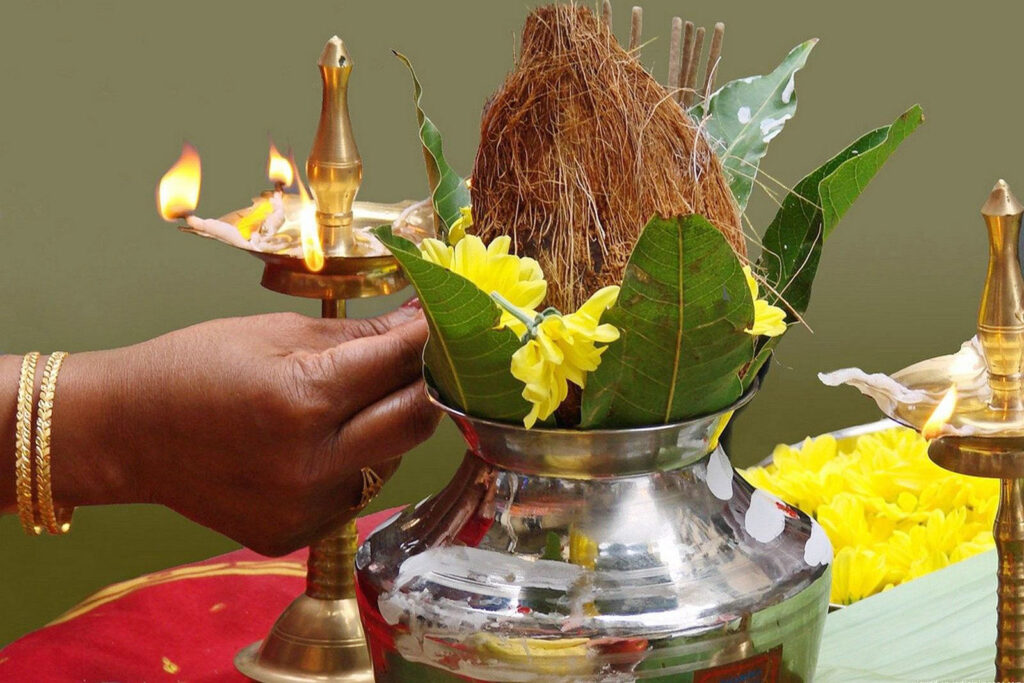
Kerala Vishu festival in other states and countries? Yes, we can find some possibilities in other Indian states and Southeast Asian countries. Let’s take a look at what it is.
There are similar celebrations not only in Kerala but also in some states of India and some Southeast Asian countries. Celebrations similar to Vishu are held everywhere in the form of Karshikothsavam (Agricultural festival) or New Year.
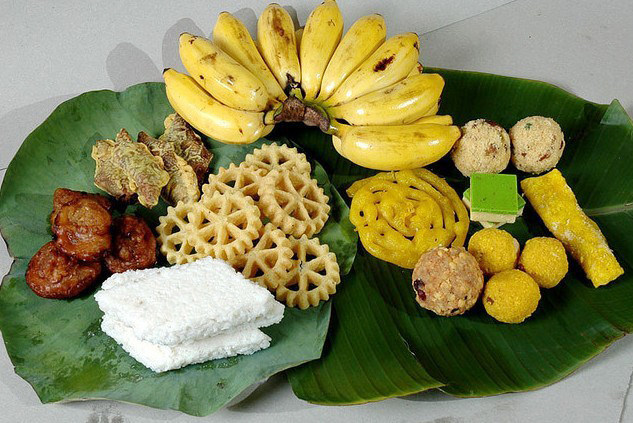
Celebrations similar to Vishu In other Indian states:
Assam: Bihu
Odisha: Pana Sankranti
Tripura: Beusu
Puthand: Tamil Nadu, Puducherry, northern and eastern regions of Sri Lanka.
Ugadi: Karnataka, Andhra.
Bisu: Tulunad region of Karnataka and Kerala.
Vaisakhi: Punjab, Nepal.
Aluth Avuruddha: Sri Lanka.
Celebrations similar to Vishu in Southeast Asian countries:
Thingyan: Myanmar
Pai Mai: Laos
Songkran: Thailand
Moha Sankranti: Cambodia
Watch the YouTube video about Specialties of Kerala’s agricultural and religious festival Vishu.
Similarly, do you want to get some more information about Kerala?
Therefore, please check the previous post:- Why Kerala is known as God’s own country – Part 1 for more pieces of information about Kerala.
Why Kerala is known as God’s own country – Part 2
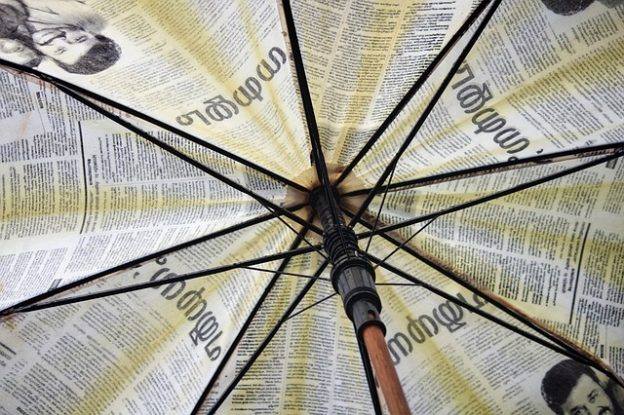
Malayalam Language (മലയാളം)
History:
- Thunchathu Ramanujan Ezhuthachan is known as the father of Malayalam language.
- Malayalam is one of the 22 scheduled languages of India. Similarly, it has official language status in Kerala state, The union territory of Lakshadweep islands and Puducherry.
- The Malayalam language listed as a “Classical Language in India” in 2013. So let’s check those Six Classical languages in India. [Tamil, Sanskrit, Telugu, Kannada, Malayalam, and Odia].
- The scripture has 52 letters, one of the largest alphabet systems in the country. And the script consists of a total of 578 characters as well. So any other Indian language can write using this script.
- Malayalam has a huge vocabulary. It’s about 90,000 words. The modern Malayalam literature is complex as that of any other languages in the world.
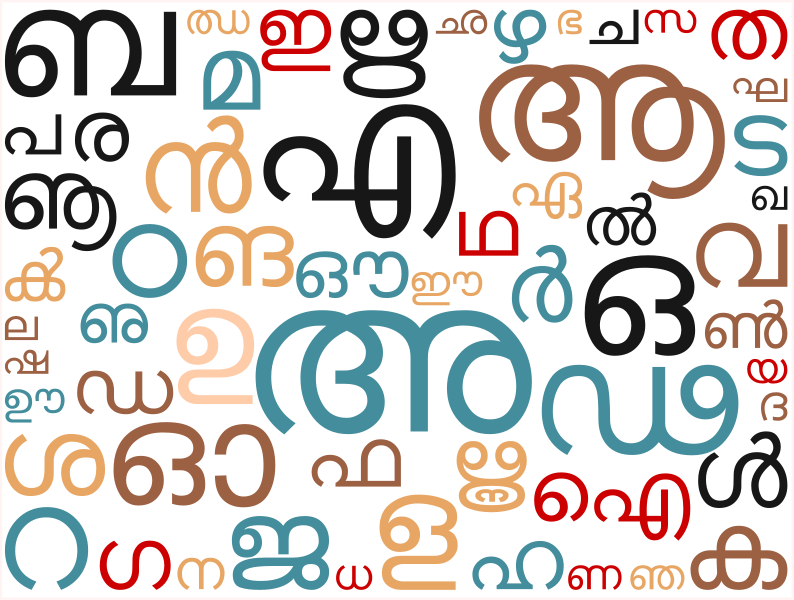
The Malayalam alphabets
Quick facts:
- The Malayalam language is under the Dravidian language family. So, it has some similarities with other Dravidian languages. Mainly similarities with the Tamil (Tamizh) language. But then also there are many differences in Malayalam. Compare to other Dravidian languages. Example: “Annan“ is a common word of Dravidian language family except for the Malayalam language. “Chettan” is the Malayalam word instead of “Annan”. The meaning of the word is the same, “Brother“ or “Elder brother“.
- The name Malayalam is “Mala“ + “Alam“. That means, the “place under the hill area“. The Western Ghats is that hill area [word “Mala“], which is bordering like a big wall of Kerala states east side fully. State’s south [Thiruvananthapuram] to north [Kasargod] area. Finally, the word “Alam“ means, land/place/region. So Kerala state is geographically known as Malayalam or “Kairali“ also.
- Native Malayalam language speakers are known as “Malayali“.
It’s one of the tongue-twisting languages in the world. Why? Few points are below:
- First of all, almost every language is taking an average of 100 words in a minute. The same time, the Malayalam language is talking about 200 words in a minute.
- Pronouncement of alphabets like Zha (ழ, ഴ) is using only in Malayalam (ഴ) and Tamil (ழ) in Indian languages. Example: Mazha = Rain, Puzha = River.
Less usage of Zha (ழ, ഴ) is presently in Tamil. But Malayalam is using that also regularly without many changes by generations. - Similarly, other pronouncements like Nja(ഞ്ഞ), Nga(ങ്ങ), Tta(റ്റ), Nta(ന്റ) also not easy for non-native Malayalam speakers. Actually, it’s very difficult to get the exact pronunciation of such Malayalam words with English alphabets.
- Even more different and unique type of sounds like Ra (ര) also available in Malayalam. That’s why it’s very difficult to write Malayalam in any other language scripts. So Malayalees (native Malayalam speakers) can learn other language pronunciations very easily.
- Pronouncement of alphabets like Zha (ழ, ഴ) is using only in Malayalam (ഴ) and Tamil (ழ) in Indian languages. Example: Mazha = Rain, Puzha = River.
- Malayalam has a similar and easy type of logic like English. Mainly for counting in the number system.
- It has the longest palindrome (a word that reads the same backward, and forwards) in the English language. Example “MALAYALAM”
- Malayalam has a strong and huge literary history. The city Kottayam (The city of Letters) is an example of the Malayalam literary strength. That place is the Capital of Malayalam publishing houses.
- The first travelogue in any Indian language is Malayalam book “Varthamanappusthakam”. Published in 1785 AD.
- Another important thing is, The Kerala state’s official name is “Keralam“ in the Malayalam language by traditionally. But it’s “Kerala” (English & Hindi) as per Central Government records of India.
- One of the major Malayalam newspapers has a National record. The largest selling regional language newspaper in India. Similarly, the 11th most circulating newspaper in the world.
The Onam festival – Pookkalam (religious art with flowers)
Religious culture
- Hindus, Christians, Muslims, and Jews live peacefully together. (Jainism & Sikhism are unique in the state).
- Onam is the state festival, traditionally. This festival is related to the epic of Kerala’s ancient king Mahabali and Vamana avatar. King Mahabali requested the Lord, one thing. Allow him to visit his kingdom at-least once in a year. Therefore, Keralites celebrate the Onam festival to welcome the king Mahabali.
- St. Thomas Church, Thrissur, Kerala is the first Church in India. It was established in 52 A.D.
- The first mosque in India is in Kerala. Cheraman Juma Masjid, Kodungallur. It built-in 629 A.D.
- In addition, The first synagogue in India also in Kerala. The Paradesi Synagogue Kochi city. It constructed in 1567 A.D. Now also Jewish community is residing in Kochi city, the same as Keralites.
- Pooram is a Hindu temple festival in Kerala. Thrissur pooram is the biggest pooram. Moreover, Thrissur pooram main fireworks are well renowned all over the country.
Similarly, do you want to get some more information?
Therefore, please check the previous post:- Why Kerala is known as God’s own country – Part 1 for more pieces of information. Thanks,
Why Kerala is known as God’s own country
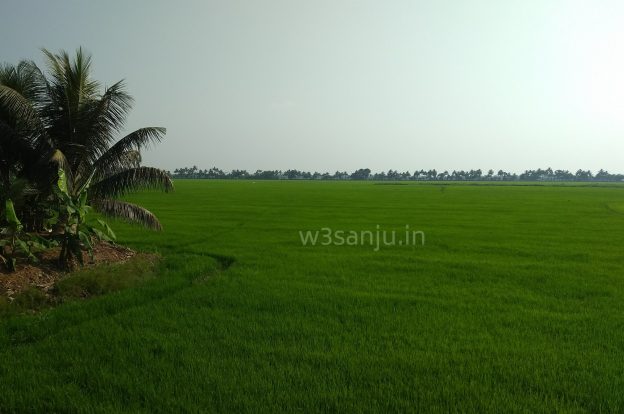
As per Hindu mythology, Kerala was created by Lord Parasurama, an avatar (incarnation) of Lord Vishnu by throwing his Axe across the sea to create new land for his devotees to live peacefully. Heavenly natural resources and people are welcoming everyone to visit the state. No major communal issues happened in Kerala, like any other states in India.
Records of Kerala state in India / World
- The first state to achieve 100% literacy rate in India.
- Kottayam is the first city in India to attain 100% literacy (in 1989). It is located in central Kerala area. Kottayam is a well-known place for education from history time. So Kottayam is known as “Akshara Nagari” (City of Letters).
- Ernakulam district,(Kerala state) was declared as totally literate in 1990. It’s the first district in India to have achieved 100% literacy.
- Kerala state achieved 100% literacy in 1991. It’s the first state to achieve 100% literacy rate in India. Now Kerala is top in the table of literacy rate in Indian states.
- State’s sex ratio is 1048 females: 1000 males. The national average is 945:1000. A prior check-up is not allowed for knowing the baby’s gender. No abortion related to upcoming baby’s gender. Boys and girls are getting equality everywhere.
- 1st rank in India for HDI (Human Development Index), which is comparable with some European countries. Kerala is the only State in India which remains in the “very high human development index (HDI)” as per, world-class standards.
- WHO (World Health Organization) and UNICEF declared Kerala to be the world’s first “Baby-friendly state” in the world.
- First complete digital state in India.
- The first state in India which is 100% electrified.
- Kottayam, Kerala became the first tobacco free district in India in 2008.
- Kottayam Port: India’s first inland Port is located in Kottayam municipality.
- Kerala is the least corrupt states in India. It’s 4%, which is far better than other states like, Karnataka (77%), Andhra Pradesh (74%), Tamilnadu (68%), Maharashtra (57%) and J& K (44%). (According to CMS – Indian Corruption Study 2017 and Transparency International Survey.)
- Kerala is the first state in India to offer free cancer treatment to the poor.
- Kerala state has the highest life expectancy in India, 77 years. The USA has 78.60 years & 71.59 years in Russia. Kerala state has a world-class level in health care. The state has a lot of hospitals in every corner including super specialty hospitals. Government hospitals are there in every village for free treatments. Private hospitals are getting a subsidy from the state government. So private hospital charges are less than any other cities in India.
- It has the highest media exposure in India. Newspapers are publishing in nine languages, mainly Malayalam and English.
- Technopark, Thiruvananthapuram is the first IT park in India and the largest IT park in Asia. Established in 1990 by the Government of Kerala. This ISO certified Technology Park has about 400 companies with more than 56000 employees. It is also known as the world’s greenest Technopolis.>
- Cochin International Airport is the first airport in India developed under a public-private partnership (PPP) model. It is the fourth busiest airport in India in terms of international traffic and the world’s first fully solar-powered airport. In 2018, it got Champion of the Earth award, the highest environmental honor instituted by the United Nations.
- Kerala has 4 international airport’s, which is the highest ratio in India.
- Asia’s largest, and the world’s third-largest, Naval Academy-Ezhimala Naval Academy is in Kerala.
- Idukki arch dam, the world’s second arch dam, and Asia’s first.
- World’s first Teak Plantation, World’s Largest and Longest Teak are in Kerala. World’s only one Teak Museum is in Nilambur, Kerala.
- Kerala is the first state in the country to have STD and ISD facilities in all its villages.
- Ancient Padmanabhaswamy temple in Thiruvananthapuram, Kerala is the richest worship center in the world and in terms of assets gold and precious stones.
- Kerala is one of the first South Asian states which abolished the centuries-old practice of slavery. In 1812, the Travancore ruler Her Highness Maharani Lakshmi Bhai abolished the slave trade in Travancore state. After that, the Travancore king His Highness Uthradam Tirunal Maharaja banned all forms of slavery and slave trade in 1853. Then the neighboring princely state Kochi also banned slavery in 1872.
- The Travancore King His Highness Chithira Thirunal Balarama Varma Maharaja abolished the ban of Temple Entry Proclamation (low caste people were not allowed to go to temples) in 1936. It was a milestone in the history of Kerala and India. Gandhi sent a message to Travancore king: “ People call me “The Mahatma” and I don’t think I deserve it. But in my view, you have in reality become a “Mahatma”(great soul) by your proclamation at this young age, breaking the age-old custom and throwing open the doors of the Temples to our brothers and sisters whom the hateful tradition considered as untouchables. “
- In 2015 Idukki district, Kerala achieved the first district in India to be fully connected by high-speed broadband connectivity.
- Kerala has emerged as a truly ‘digital state’ with a mobile teledensity of 98% and Internet access covering over 80% of the population.
- Startup Village, Kochi is India’s first incubator business environment that is funded jointly by the public and private sector.
- Cochin Shipyard is one of the major shipbuilding and maintenance facility in India which is famous for Ship design, Shipbuilding & Ship repair. Cochin Shipyard built India’s first Indigenous Aircraft Carrier for Navy, INS Vikrant.
- India is the world’s 4th largest natural rubber producing country. Kerala state is producing 92% of rubber in India.
- NH 47A was the shortest highway in India. Now it’s the second-shortest highway in India. Length is 6 km between Kundannoor and Willingdon Island in Kochi, Kerala.
- Respects all genders with the same level:- Kerala government became the country’s first state to announce a transgender policy. Kochi have a special school for transgenders. Transgenders are working for Kochi metro rail.
- The state has the lowest population growth rate in India.
- Cleanliness. There is no house in Kerala without a bathroom or toilet. First rank in India as a state. Taking bath two times a day is a daily routine of Keralites.
- Every place has good libraries. DC Books, Kottayam is the first publishing house to get ISO certification in India, one of the largest literary publishers of India, which is publishing average 1500 books/year.
- Highest health rate in India. 2,700 government medical institutions in the state, with 330 beds per 100,000 population. Rulers of the states of Travancore and Kochi took the initiative to implement the western health care system in Kerala in the 19th century.
- The Kochi metro project is the first metro in the country which connects rail, road and water transport facilities. World’s first metro whose entire management operations are handled by women.
- School Arts Festival of Kerala (Kerala School Kalolsavam) is considered to be the biggest cultural event of Asia, which is conducted by the state government of Kerala.
Quick Facts about Kerala – The God’s own country:
Country: India
State: Kerala
Local languages: Malayalam, Tamil, and English
Sex ratio: 1048 female(s)/1000 male(s)
International Airports: Cochin International Airport, Trivandrum International Airport, Karipur International Airport & Kannur International Airport. [The upcoming, Sabarigiri International Airport will be in Central Kerala area.]
Similarly, do you want to get some more information?
Therefore, please check the next post:- Why Kerala is known as God’s own country – Part 2 for more pieces of information. Thanks,
Harappan city Lothal – World’s first port town in Human history
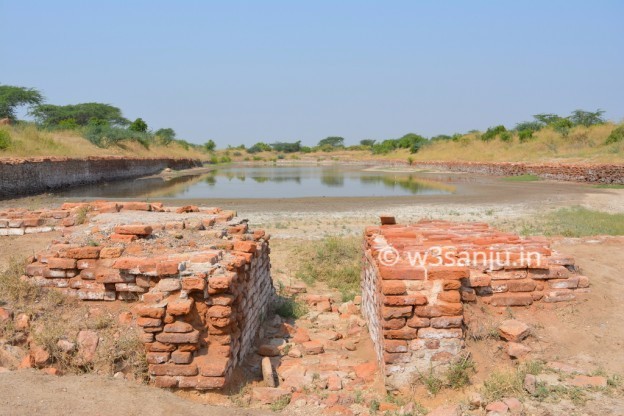
Harappan city Lothal is one of the greatest Harappan ( Indus valley ) civilization site, excavated in the Indian border. A wide range of amazing antique things excavated from this heritage site. Lothal was a gemstone of Indus valley civilization, like other heritage sites Harappa and Mohan Jo Daro. World’s first dock is found in Lothal, which is dated back to 2300 BC. This site was excavated by Dr. S.R Rao in 1955-1962.
The ancient port town Lothal is located in Saragwala village, Gujarat, India. The meaning of the word Lothal is “Place of the Death”. It’s same to the meaning of the word “Mohan Jo Daro”, which is an another Indus valley civilization site.
Note:
Please check out my YouTube video about the Harappan city Lothal for more details, which I made basis on my visit in 2017 : https://www.youtube.com/watch?v=KYtkAY1B1Ig
The World’s first Dockyard :
World’s first Dockyard
The dock is the main attraction in Lothal. Area of the dock is 37 meters length from east to west and width 22 meters from north to south. Once the dockyard could hold 30 – 60 ships. This would be comparable to modern time’s dockyards of Mumbai or Visakhapatnam. The dock was a hub of sea route trading with Egypt, Mesopotamia & Rome. It is built in 2300 BC and lost its importance because of high flood in 1900 BC The dock and town were well planned by ancient architectures. They build a future city for more than 400 years. This inland port connected Arabian sea via a branch of Sabarmati river. River route has been changed, because of the flood in 1900 BC Then people left the town for a short time period. Later they came back and restored the town. But unfortunately, the port lost importance forever because of the change in route of the river. So, people didn’t try to recover the port. Many warehouses were situated near the dock for keeping trading goods. Warehouses are located 3 meters above the ground level for protecting goods from floods and tides.
The Town :
Archeologists found many heritage items from this excavated site, which is dated from 3700 BC. A well-planned drainage system is a hallmark of ancient Indus cities. Lothal also had a good underground drainage system, better than any other ancient civilization.
lothal lowertown and cemetery under vegetation
The cemetery excavated at Lothal is clearly separated from the settlement, which had the form of brick chambers. Dead body’s head generally positioned to the north direction. Daily using things like, pottery, ornaments were placed in the graves with dead bodies. That’s giving a clear indication of Harappan people’s belief in an afterlife. Some graves took the form of brick chambers within which the body was placed. At Lothal many pairs of skeletons (male & female) were found in the same grave, like an indication of some form of Sati. :- https://en.wikipedia.org/wiki/Sati_(practice)
Culture & lifestyle :
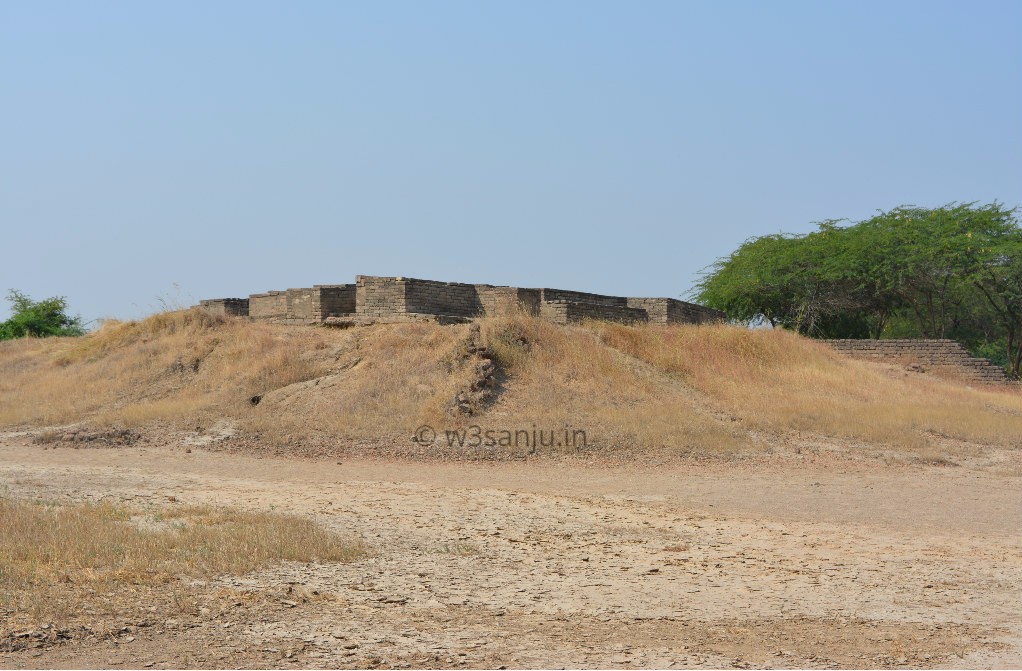
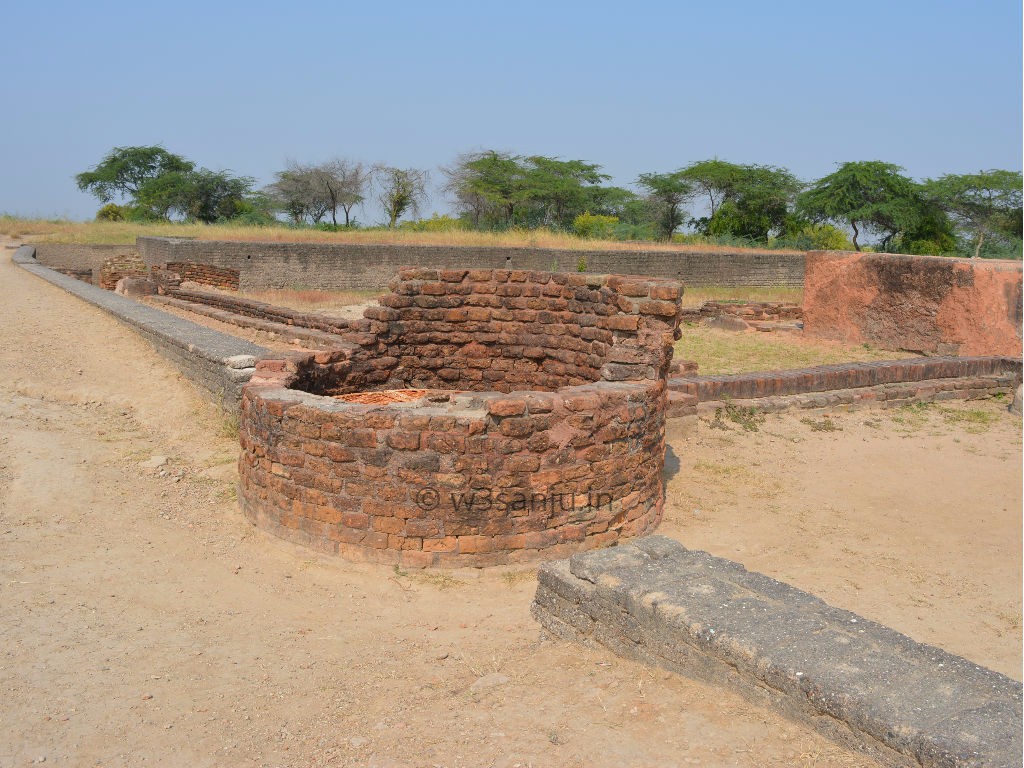
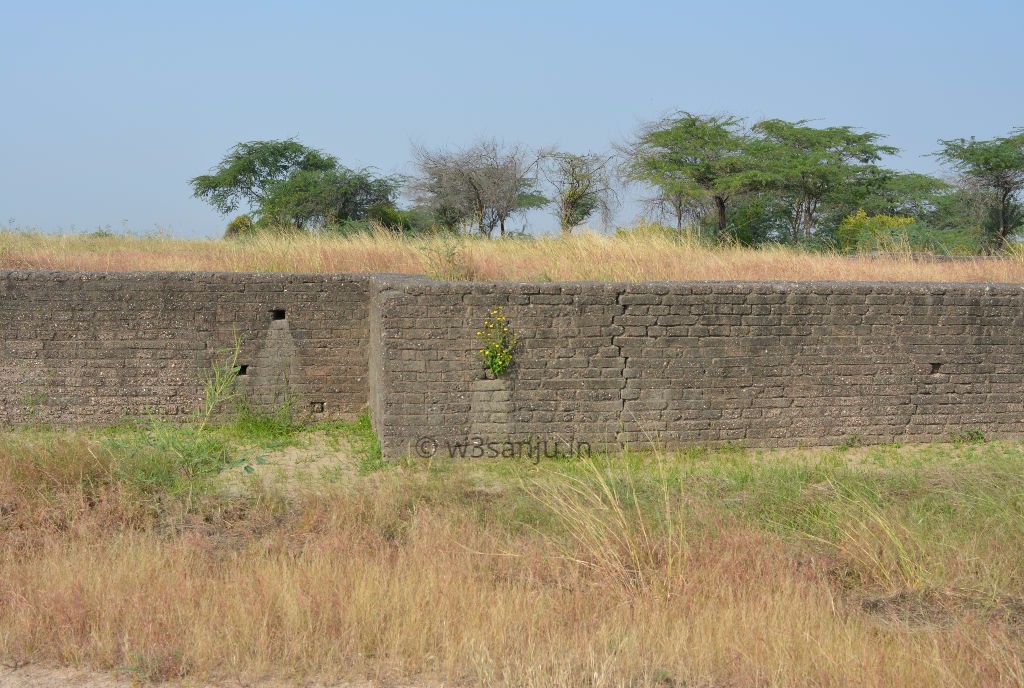
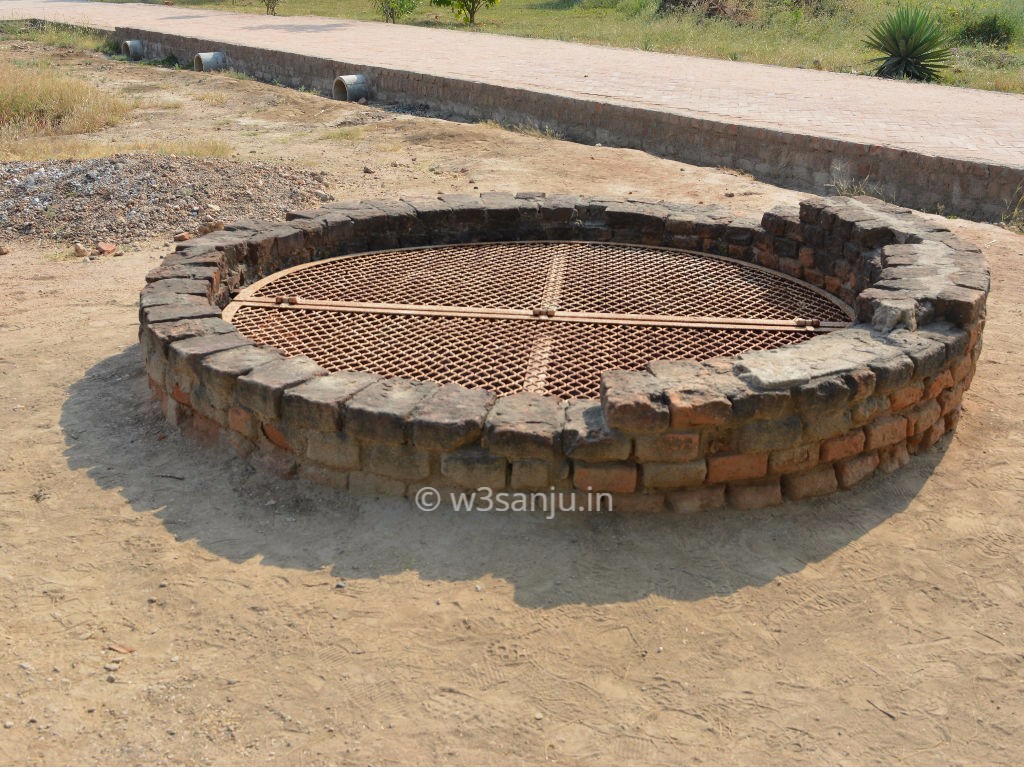
Harappan city Lothal was the only one port-town of the Indus Valley Civilisation. It was a metropolis like London, New York etc. Lothal had trade connection with many countries, Egypt, Iraq, Gulf etc, Some flat stones with grid markings and playing pieces also found, which shows that the Harappan people may have played an early form of chess.
Historians have identified a Harappan city Lothal seal which is showing someone sitting like a monk, the god as Proto-shiva – Pasupathi. Discovery of a large number of cylindrical stones shows that people worshipped Shiv Lingam, the symbol of God Shiva. Those things are considered as the Vedic culture of Harappan Civilisation.
The decline of Harappan city Lothal :
There is no evidence that Lothal town was ever burned or a big war. So natural disasters like massive flood, after rivers changed their course, was the reason for the decline. One more point is climate change. Many pieces of evidence telling, once rhinos, elephants etc., were living that area. Now Indian rhinos living in Himalayan area of India & Nepal. Elephants also not living in this area. So climate change also can consider as a reason for the decline of Lothal. That’s why might be people left the place. People came back to Lothal even after the flood. But then also, they were not able to restore the town. Lothal lost it’s power forever in 1900 BC, because of the course change of river. It lost importance as a center of trade through shipping. Finally, people migrated to other Harappan towns for the living.
Archeological Museum :
About 800 objects are on display in the museum, which Archeological Survey of India (ASI) got from Lothal – during the archaeological excavation.
Museum have ancient human skeleton, beads, bangles, terracotta ornaments, animal and human figurines, weights, painted potteries like jar, dish , game objects like chess dice, replicas of seal and sealings, shell, ivory, copper and bronze objects, potteries and tools like copper / bronze fish hooks unearthed from excavations.
Entrance Fee: Rs. 5/-
Opening Hours: 10:00 am to 5:00 pm
Closed on – Friday
Note: Photography is strictly prohibited in Museum.
How to reach :
Bus :
81 km distance from Ahmedabad to Lothal via Ahmedabad – Bhavnagar route.
Get down near Gundi (Lothal-Bhurkhi) railway crossing. It will take about 2.5 hrs to reach there. Lothal site is located 7 km from this road. Auto rickshaw is available from near railway cross. There is little difficult to get any return vehicle from the Lothal site.
Daily Trains :
AHMEDABAD – 06:05 am
LOTHAL BHURKHL – 09:30 am
LOTHAL BHURKHL – 04:20 pm
GANDHIGRAM – 7:30 pm
Quick Facts:
Country: India
State: Gujarat
District: Saragwala
Coordinates: 22.52 N 72.24 E
Local languages: Gujrathi and Hindi
Best Time to Visit: September to March
Opening Hours: 10:00 am to 5:00 pm
Closed on: Friday
Nearest Airport: Ahmedabad Airport
The Ruins of Belapur Fort
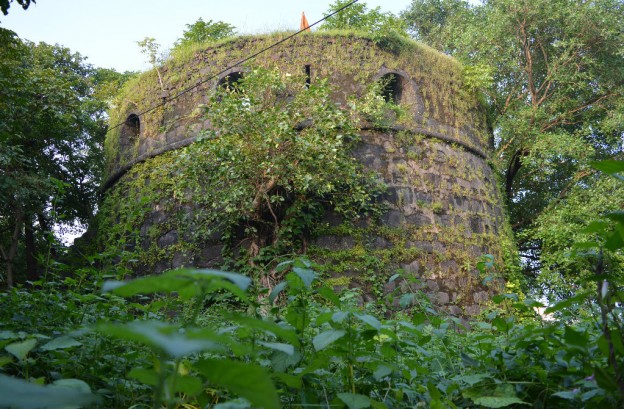
Belapur Fort is a fort near the township of Belapur in Navi Mumbai (New Bombay), Maharashtra, India. The fort was built by the Siddis of Janjira. In 1733, the Marathas wrested control of the Belapur Fort from the Portuguese. After the victory, the fort was renamed as Belapur Fort. In the early 19th century, the fort was captured by the British. After the British gained supremacy in the region, with the expansion of the Bombay Presidency, the strategic importance of the fort declined, and it fell into disuse.
Navi Mumbai Municipal Corporation building
Once there were three watchtowers related to fort in the area. One watch tower is located opposite to Navi Mumbai Municipal Corporation building. It is fully restored like a modern building and tower is surrounded by a small garden. It’s hidden by vegetation even it’s locating next to a busy traffic junction. Fort is in ruined condition, but the traffic junction remains the name, Killa junction. Killa means, Fort in Marathi language.
Old Watchtower opposite to Navi Mumbai Municipal Corporation building
Ruins under vegetation
Second watch tower was a part of fort, which is located inside the ruins of fort. We will get a clear view of Panvel Creek from the top of the watch tower. Once this creek area was an important place of sea route trading. And this watch tower was helpful for preventing attack from sea. That was the actual reason behind the fort. Nothing is remaining there, except the partially destroyed watch tower and foundation of fort under the vegetation.
cidco guest house road
Third watch tower was located in an abandoned place near by creek and nothing is remaining now.
History :
Fort was built in 1560–1570 by the Siddis, after they took control of the area from the Portuguese. It is located atop a hillock, near the mouth of the Panvel Creek. In 1682, the fort was recaptured by the Portuguese, who had managed to annex the regions controlled by the Siddis, near Belapur (at that time known as Shabaz).
The ruins of belapur fort and watchtower
In 1733, the Marathas, led by Chimnaji Appa, wrested control of the fort from the Portuguese. He had made a vow that if it were to be successfully recaptured from the Portuguese, he would place a garland of beli leaves in a nearby Amruthaishwar temple, and after the victory, the fort was named as Belapur Fort. The Marathas ruled the area until 23rd June 1817, when it was captured by Captain Charles Gray of the British East India Company. The British partially destroyed the fort under their policy of razing any Maratha stronghold in the area.
Top of Belapur fort
During its active days, the fort stationed four companies each of 180 men and 14 guns ranging from 4-12 pounds (2-5 kg) in weight. An underground tunnel is also supposed to exist, which many locals believe that it connects to Gharapuri Island, the site of the Elephanta Caves.
Inside view of Belapur fort’s watch tower
Present :
The remaining parts of the fort are situated on the top of a small hill near panvel creek and CIDCO guest house. Ruins are under vegetation. The fort is surrounded by several residential complexes. So it’s little difficulty to find out the fort and watchtower. There is narrow walk way to reach the fort and you have to find the way through bushes. CIDCO’s plans are underway to renovate the fort which is in danger of being lost to encroachments.
Panvel creek
How to reach :
10 min walkable distance from Belapur – Uran road in between Navi Mumbai Municipal Corporation building and Panvel creek.
Reference:
https://en.wikipedia.org/wiki/Belapur_Fort
Top 5 places in London that every traveler must visit and see
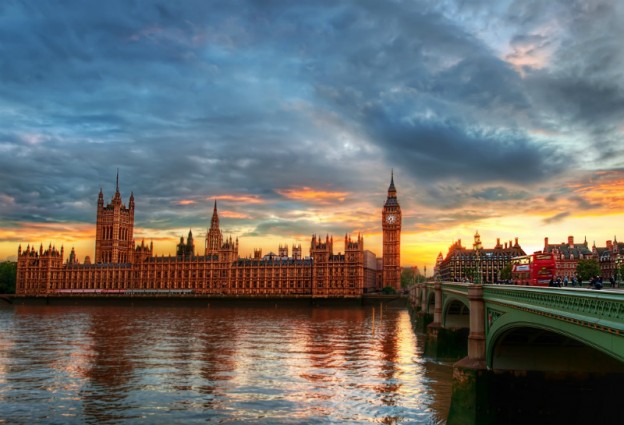
London is the capital of England and the United Kingdom. This city is also known as one of the world’s best travel destinations. Each year London attracts thousands of tourists from all over the world. Once you visit this wonderful city you will desire to return back to it again and again. Are you going to visit London in the nearest future? Obviously, you need to plan your travel in advance. You need to know how to navigate around the city and what attractions it makes sense to see in London. Moreover, it is a good idea to book accommodations for stay in advance. Our goal is to help you plan your trip around London successfully. Just go ahead and find a lot of useful information and tips in this London travel guide.
London Eye – It is hard to imagine the capital of Great Britain without London Eye. It is one of the most popular attractions in London, England and around the world. London Eye gives everyone a good chance to enjoy fantastic views of the city. The wheel is 135 meters in height. Don’t miss a splendid opportunity to take a look at the capital from London Eye.
ZSL London Zoo – Do you want to find a place where to have a good time with your family in London? Then it is a good idea to visit ZSL London Zoo. Here, you will manage to see a lot of exotic animals. You and your kids can also feed animals in ZSL London Zoo. The zoo is the place that will provide you and your family with many positive and unforgettable emotions.
Buckingham Palace – When traveling around London you must definitely visit Buckingham Palace. This royal palace remains to be one of the most popular attractions in the world. The palace is open to public, so everybody can visit it and see how the royal family lives. Over 62,000 guests visit the palace annually. You can visit it if you come to London in summer. Have an unforgettable tour around State Rooms and explore the amazing royal collection of art that is displayed in Buckingham Palace. The collection includes the pictures of many legendary artists (such as Rembrandt and Rubens) and sculptures of Canova.
Windsor Castle – Would you like to see the place where the Queen prefers to spend her weekends and organize various events? If so, you must definitely get the fantastic 2-3 hour tour around the royal residence. By the way, Windsor Castle is one of the oldest royal palaces in the world. It was built for the royal family 1000 years ago. The palace can be unavailable for guests due to ceremonies and official events. So, you need to plan your visit in advance.
Tower Bridge – This legendary bridge is known all over the world. It is another great place that tourists must visit and see during their travel around the city. Tower Bridge provides its guests with fantastic panorama of London and a lot of great exhibitions. It is also a historical place, where you will manage to find out a lot of interesting facts from London’s history.
www.TravelOnlineAdvisor.com The ultimate site for comparing and booking thousands of hotels and flights online. Get the best price.
Getting Around London:
London is the city with a well-developed transport infrastructure. The different means of transportation are available in London, so you will definitely find it easy to navigate around the city. You can get around London by Tube, bus, bicycle and taxi.
Where to Stay in London
London provides travelers with a wide choice of hotels for stay. This means that you will easily manage to select a comfortable hotel for stay in the city that will meet your budget and requirements. However, good hotels can be busy during the tourist seasons. So, travelers are advised to choose a hotel and book accommodations in London beforehand.
Queens Hotel – This hotel is an ideal option for people who are traveling around London on the budget. The hotel offers rooms of different types: single rooms, double rooms, triple rooms and family rooms. The hotel’s rooms are equipped with the following facilities: tea and coffee making machines, color television, private shower and toilet facilities. The hotel is open to guests 24 hours per day and 7 days a week. So, you are always welcome at Queens Hotel!
The Montague on the Gardens – Are you looking for a medium range hotel in London? It is a good idea to consider The Montague on the Gardens. This wonderful 4 Star hotel is situated in the central part of the city, so guests are provided with easy access to all parts of London. The Montague on the Gardens will impress you with its up-to-date facilities, good places to eat and drink, a wide selection of rooms and excellent customer service! Here, you will find everything that is required for a restful and enjoyable stay in London.
The May Fair Hotel – Would you like to stay at one of the most luxurious hotels in London?
Obviously, The May Fair will be definitely the right choice! The hotel is located in the Western part of the city. This legendary London hotel was opened in 1927 and has a rich and long history. The last time the hotel was remodeled in 2001. Today, the hotel provides its guests with more than 400 comfortable bedrooms and suites equipped with the most up-to-date facilities. Spa, restaurant, casino are also available for guests of the hotel.
Useful Tips for London Travelers:
Travelers are recommended to visit London in spring. The city is especially beautiful in this season of the year. London’s parks are green and blooming in spring. A lot of people also like to visit London in summer. However, most hotels of the city are busy in summer and hotel prices are also extremely high. The weather in London is often rainy. So, don’t forget to put an umbrella in your travel pack. You will definitely need it during your travel.
www.TravelOnlineAdvisor.com
The ultimate site for comparing and booking thousands of hotels and flights online. Get the best price.
Elephanta Caves – The ancient cave city of lord Shiva
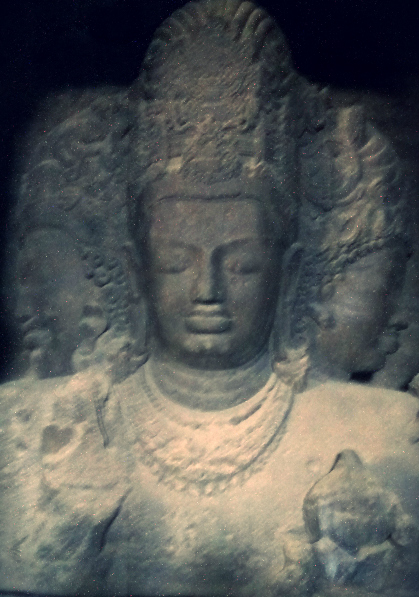
Three-headed (Trimurti) sculpture of the Lord Mahadeva
Elephanta (Gharapuri – the city of caves) is one of an island in Arabian sea, about 10 kilometres to the east of the Metropolis city of Mumbai (the commercial capital of India). The ancient cave city of lord Shiva is a UNESCO World Heritage Site since 1987 and maintained by the Archaeological Survey of India. All caves are carved from single stone – in between 5th A.D and 8th A.D. Gharapuri was the old name of the island. There was a single stone elephant sculpture in the entrance of the island, when Portuguese navigators came to this island, hence the new name Elephanta was derived. Presently, the elephant statue is housed at Jijamata Garden in Mumbai.
Elephant statue of Elephanta island at Jijamata Garden
History:
Ancient history of Elephanta caves is a mystery. The Elephanta caves are “of unknown date and attribution”. The date of the caves is different according to different Archaeology specialists. There were some inscriptions about the ancient cave city of lord Shiva, which is missing since Portuguese ruling. Different dynasties ruled this island, the Konkan Mauryas, Chalukyas of Badami, Rashtrakutas, Kalyani Chalukyas, Yadavas of Deogiri, Gujarat Sultanate, Portuguese, Marathas and Britain. Once it was the capital city of Konkan Mauryas and there was a major port from 2nd B.C. The Kailashnath temple at Ellora and Badami caves has many similarities to Elephanta caves. The Kailashnath temple at Ellora was built by Rashtrakutas and Badami caves built by Chalukyas of Badami. Rashtrakutas were strongly influenced by Lord Shiva,hence contributed for these caves.
Elephanta cave 1 in 1972 and 2015
There are two groups of caves in Elephanta Island. All caves were painted (fresco painting) in the past, now only traces are visible.1st group contains five caves and 2nd group contains two caves. All caves are carved from solid basalt rock, like caves at Ellora and Ajantha. Brahmanical worship had happened, until Portuguese rule began in 1534. They used this island as a watchtower and installed cannons, targeted to see from the top of a hill. There are two British-era cannons at the top. Portuguese army did shooting practice hence there is maximum damage to all sculptures in the caves except Trimurti sculpture in cave 1. Hinduism was declining on Elephanta Island under Portuguese rule. All caves were abandoned and were under vegetation from 16th AD to 20th AD. The annual festival of Shiva – Maha Shivaratri only survived to this day.
Charles II of England married daughter of King John IV of Portugal. Portuguese left the island in 1661, since Mumbai which included elephanta island was a part of the dowry.
Nataraja – The Cosmic Dancer
1st cave (Great Cave) is a brilliant example of glorious ancient Hindu civilization. World famous for its carving techniques. There are many forms of Lord Shiva in 1st cave. On the south wall of 1st cave, there is an unforgettable three-headed (Trimurti) sculpture of the Lord Mahadeva, representing three essential functions: Aghora (the destroyer – most powerful in the universe) on left side, Vamadeva (master of joy and beauty) on right side and Tatpurusha (preserver of positive and negative principles of existence) in the center. Famous sculptures of Elephanta caves are Trimurti, Ravana shaking the Kailash (same sculpture like cave 16, Kailashnath Temple, Ellora), Shiva-Parvati on Kailash, Ardhanarishvara (half men and half woman), Kalyanasundara (Wedding of Shiva), Shiva Linga, Nataraja (The Cosmic Dancer), Yogishvara (Master of Yoga)and Kartikeya and Ganesha.
Ardhanarishvara (half man and half woman)
Cave 2, 3, 4 and 5 are broken, small and unfinished. Cave 6 and 7 are located in the eastern side of the island. These Buddhist caves are hidden from visitors. Cave 6 and 7 need more excavation. Cave 6 was converted into a church by Portuguese during their ruling of Elephanta Island.
Ruins of Elephanta cave 5
Presently, ASI and UNESCO are doing maintenance of the caves properly. The Underwater Archaeology Wing of the Archaeological Survey of India (ASI) has discovered remains of bricks from which houses were built, stonewalls, Roman Amphoras (pots used to transport a variety of things like olive, dry fruits and spices), coins and broken parts of vessels from shores of elephanta island. Even the sand on the shore, at the north and the east of the Mora bundar, is full of small potsherds. The Roman artefacts date backs to the 4th to 6th centuries. This discovery shows that Elephanta Island was a major port and was trading with the late Roman Empire. Locals believe there was an underground tunnel from Belapur fort to Elephanta Island.
Interior of Elephanta cave 1 in 1880 and 2015
People:
There are 1000+ populations living in 3 villages in Elephanta Island, namely Shent bundar, Mora bundar and Raj bundar. Local’s earning mainly depends on cave’s tourism.
How to Reach:
The island is easily accessible by ferry from Mumbai City. Typically every 20 minutes a boat leaves from Gateway of India to Elephanta Island. Ferry Cost is Rs.130/person (Return ticket). It will take 1 hour for one side traveling. 30 min walkable distance from Elephanta Island boat jetty to the caves.
Ferry timings:
Gateway to Elephanta: 9 am – 2 pm
Elephanta to Gateway: 12 noon – 5:30 pm
Elephanta island – a view from boat
Quick Facts:
Country: India
State: Maharashtra
District: Raigad
Coordinates: 18.96 N 72.93 E
Local languages: Hindi and Marathi
Best Time to Visit: September to March
Closed on: Monday
Nearest Airport: Mumbai Airport
Reference:
https://en.wikipedia.org/wiki/Elephanta_Caves
http://asi.nic.in/asi_underw_fieldwork.asp
http://www.oldindianphotos.in
Kallil bhagavathi temple – An ancient Jain cave temple in Kerala
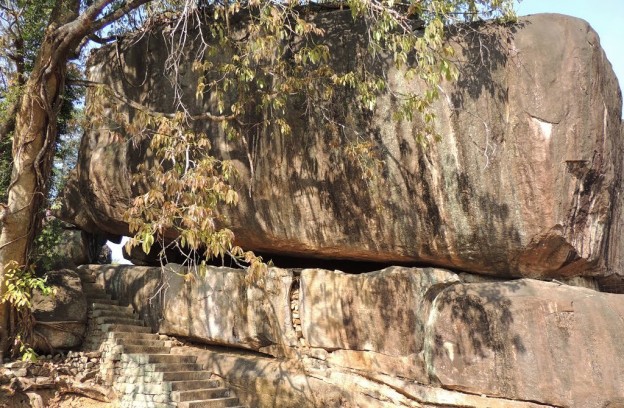
Jainism was introduced to South India in third century BC by the order of Emperor Chandragupta Mauryan (321-297 BC). From that time Jainism was well established in Kerala. In 800-1000 AD Jainism wiped out from Kerala. The revival of the Vedic Culture (Hinduism) was the main reasons of the disappearance. People were back into the Hinduism or merged with Hinduism. And Jain temples were also crushed during Tipu Sultan’s raid.
Many Hindu temples in Kerala were originally Jain temples. For example, Kudalmanikkam Temple near Irinjalakuda (Thrissur) and Kallil bhagavathi temple near Perumbavoor. Similarly, several temples in North Malabar was once a Jain temple. At present, Jainism in Kerala has a very small following. Ilango Adigal was on of the notable person of the Jain religion in Kerala. He was a poet and a Jain monk of the 2nd century AD.
Kallil cave temple is sited in Kunnathunadu Thaluk of Ernakulam District in Kerala. Is 22 km away from Kalady. The name ‘Kallil’ means ‘in Rock’. Studies indicate that the inception of the temple might date back to third century BC. The nature made cave temple, located in a 28-acre (113,000 m²) plot in thick forest area, is cut from a huge rock. The rock temple of 75 feet X 45 feet X 25 feet which rests without any proper support. The visitor has to climb 120 steps to reach this rare historic temple. There is an ancient pond that offer drinking water nearby.
Durgadevi is the main deity of the temple. The idol of Brahma is seen carved at the top of the rock. Brahma is also worshipped along with Siva and Vishnu. The temple closes after Poojas at noon every day and poojas are not being done at night. The presence of the Jain deities Parshvanath, Vardhamaana Mahavira and Padmavati devi (worshipped as Bhagawathi by the local population) point to the Jain history of the Kallil cave temple.
This very rock holding on to its position solely owing to Bhagavathi’s grace which may perhaps be called one of the wonders of the world is the unique feature of this temple. This Jain cave temple was to become a Hindu temple in the 9th century AD. Even today Jain followers come here to offer prayers.
Quick Facts:
State: Kerala
District: Eranakulam
Languages Spoken: Malayalam,Hindi and English
Weather: Summers: 35 °C (95 °F). Winters: 20 °C (68 °F)
Getting There:
Nearest Airport: Cochin Airport – 25 Km
Nearest Town: Perumbavoor – 10 Km
Reference:
http://en.wikipedia.org/wiki/Kallil_Temple
http://kallilcavetemple.com/about-en.html
Kumarakom – Paradise of backwater
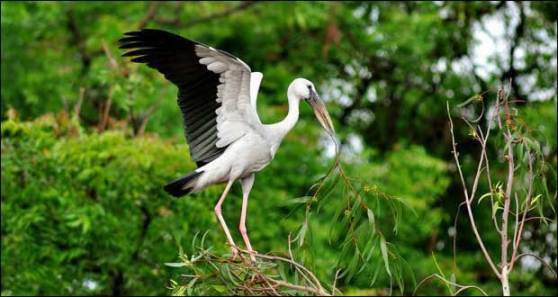
Kumarakom is a popular tourism destination located near the city of Kottayam (16 kilometers), in Kerala, India, famous for its backwater tourism. It is set in the backdrop of the Vembanad Lake which is the largest freshwater lake in the state of Kerala.
Kumarakom has been described by National Geographic Traveler as “one of the must-see paradises on earth” and, is ranked fifty in the list. Kumarakom has been declared as a Special Tourism Zone by the Kerala state Government.

Kumarakom backwaters set in the absolute accomplishments of green paddy fields and the mangrove forests is a accurate contentment to its visitors. Kumarakom is famous for its majestic Kettuvallams ( House Boat ) which reflects the marvellous or Royal architectural wonder of Kerala. Houseboats, which are absolutely furnished and able with all the accessories accept ablution absorbed bedrooms, kitchens, dining and a clandestine advanced accouter to abduction the arresting adorableness of the back waters.
Sightseeing Highlights in Kumarakom
The Vembanad Lake, the largest lake in the state. The lake is famous for its scenic beauty and hundreds of kettuvallams. A cruise through the backwater will refresh your mind.

Kumarakom Bird Sanctuary, which is spread over 14-acres of land, is a favorite place of bird lovers. It has a huge cardinal of migrating birds like the Siberian stork, Egret, Darter, Night Heron, Cormorant, Indian Shag, Purple Heron, Cotton Pygmy-Goose, Little Cormorant etc.
The Pathiramanal ( Sands of midnight ) island reflects the amazing adorableness of the Vembanad Lake and its surrounding breadth is home to many breeds of migratory birds from different parts of the world. It is home to around 91 local species of birds and 50 migratory birds. The island is located in the Vembanad Lake, about 4 km from Kumarakom.
You can additionally seek some Ayurvedic analysis from the experts and go in for rejuvenation.

Where to Stay
Kumarakom has many hotels and resorts which deals that everyone’s budget.
Hotels tariffs starting from Rs 700 and the high-end resorts and hotels tariffs can go as aerial as Rs 22,000.
Quick Facts
State: Kerala
District: Kottayam
Coordinates: 9.35 N 76.26 E
Languages Spoken: Malayalam and English
Weather: Summers: 20 – 36 C; Winters: 16 – 32 C
Getting There
Nearest Airport: Cochin Airport
Nearest Train Station: Kottayam
Main Highway: NH 47
Best time to visit: October to April

